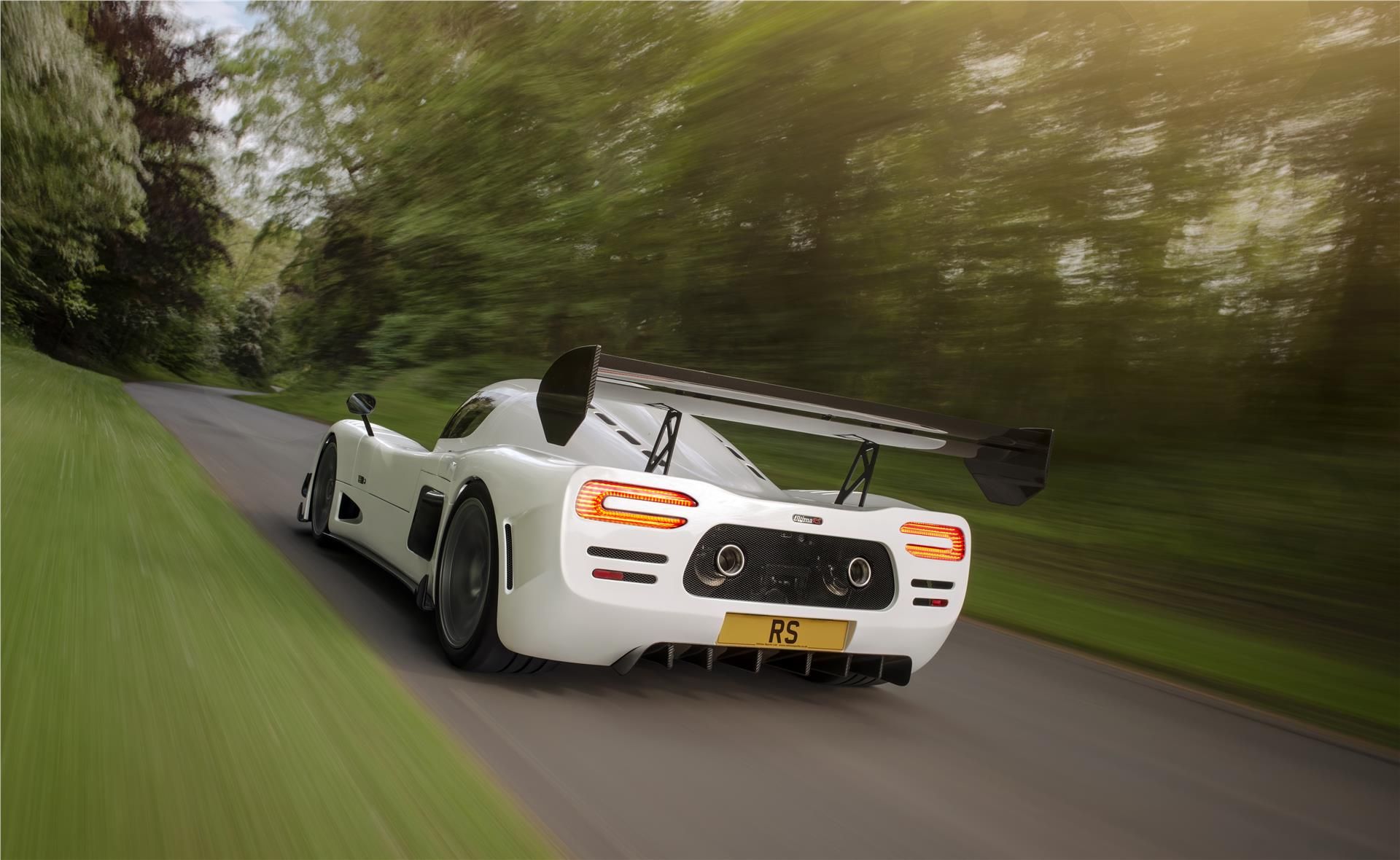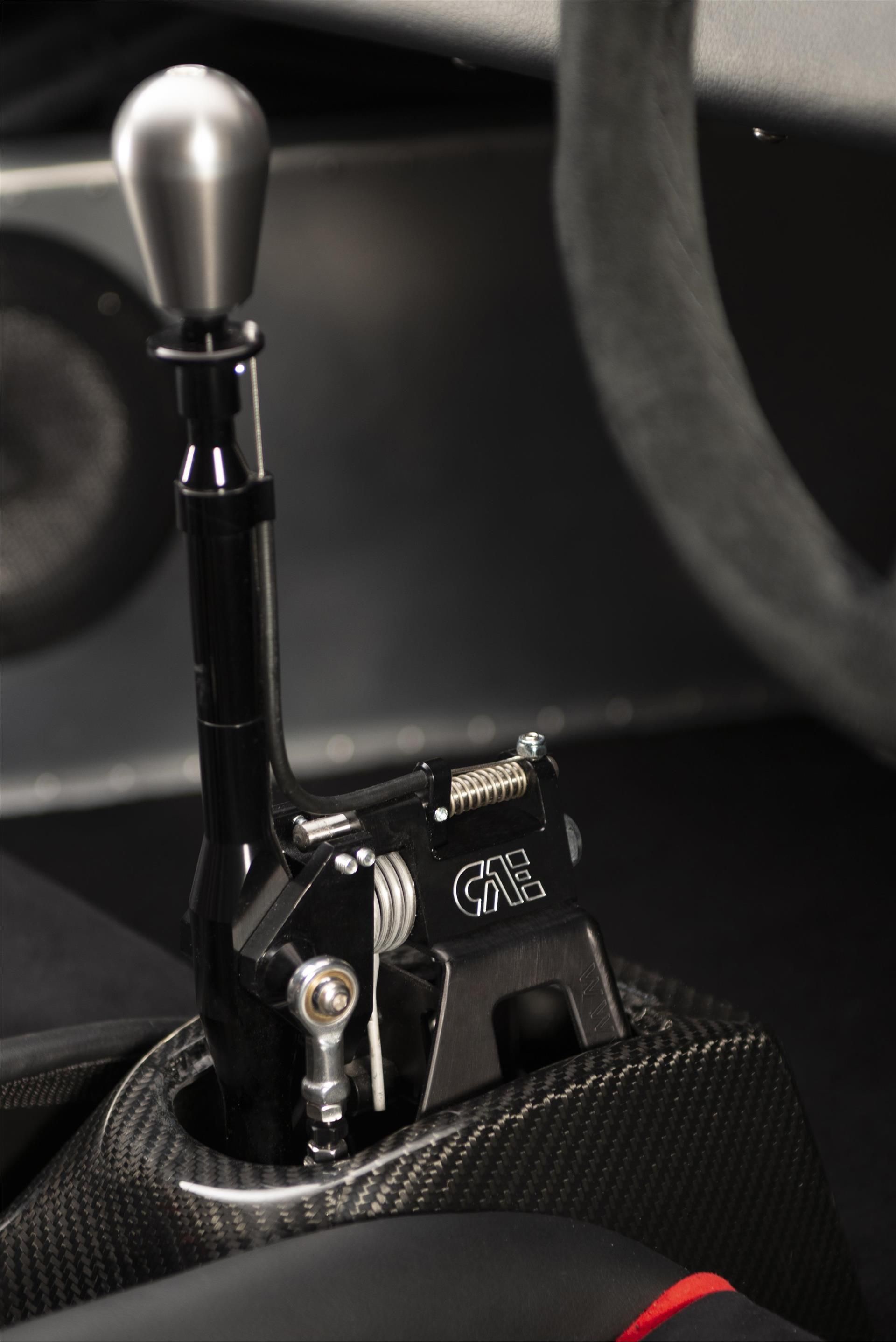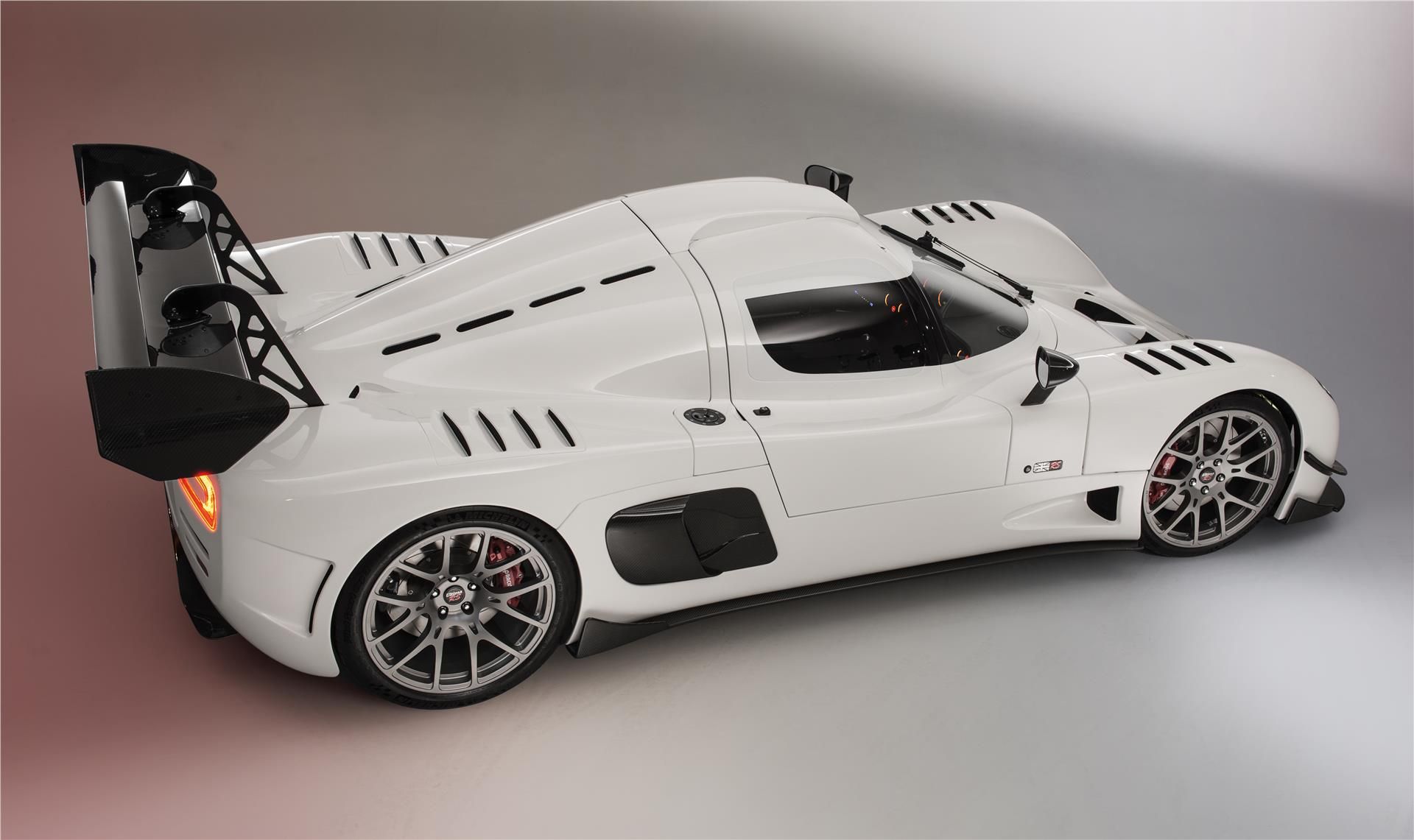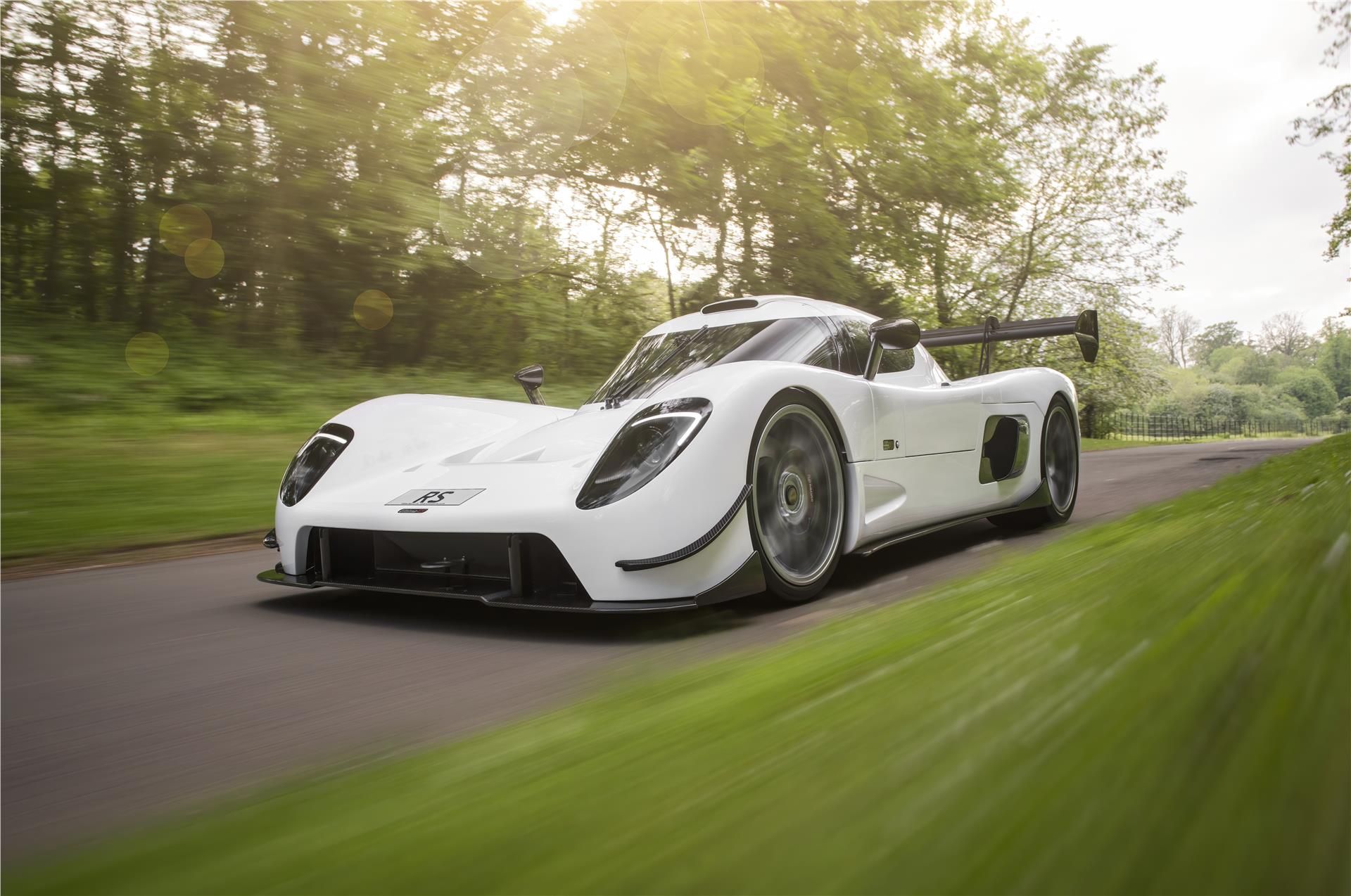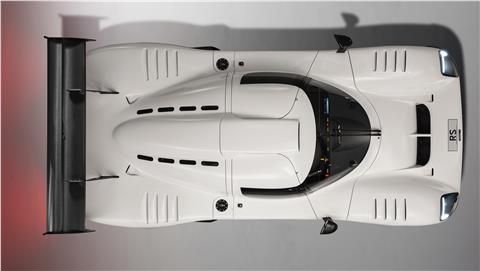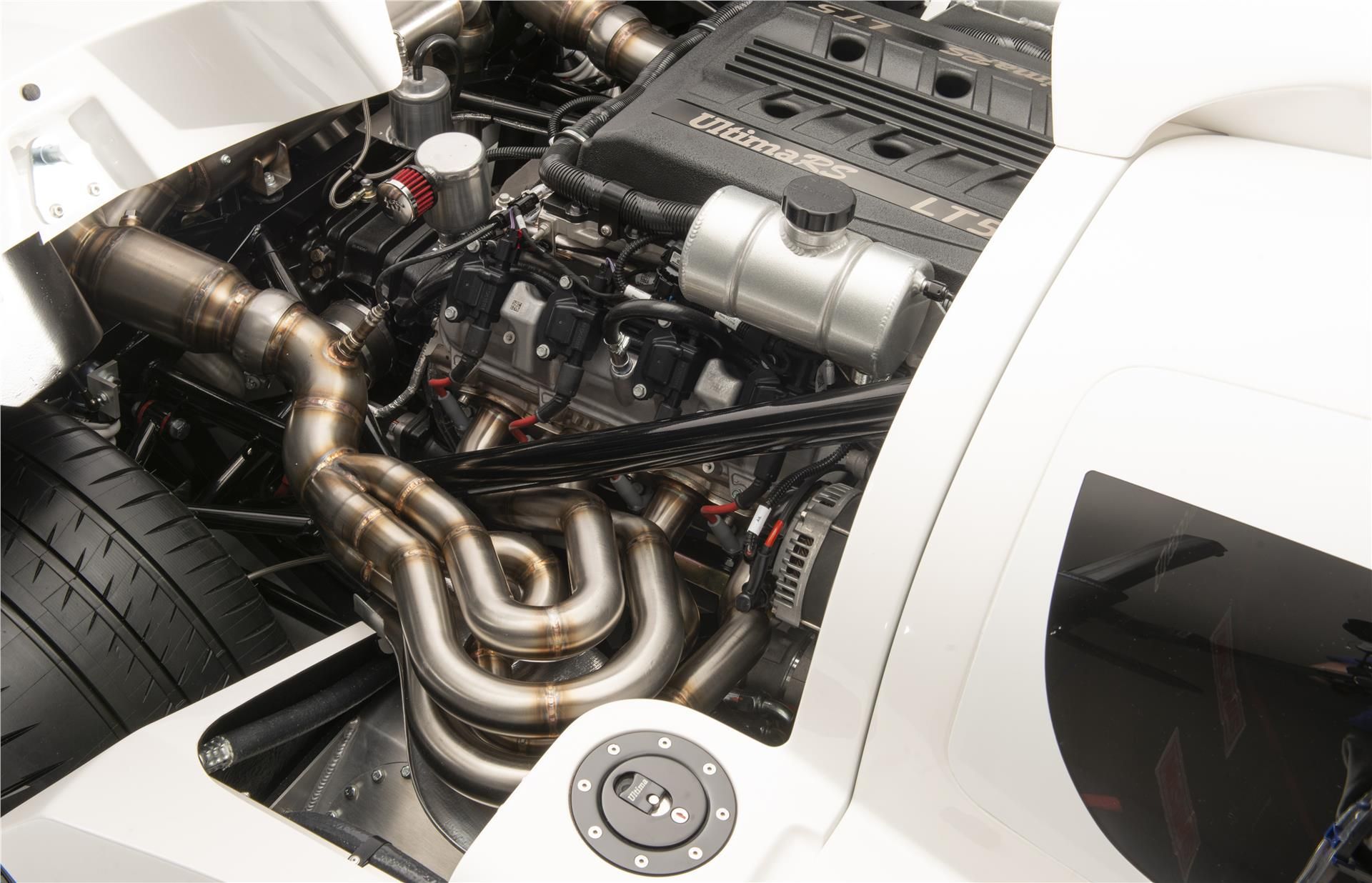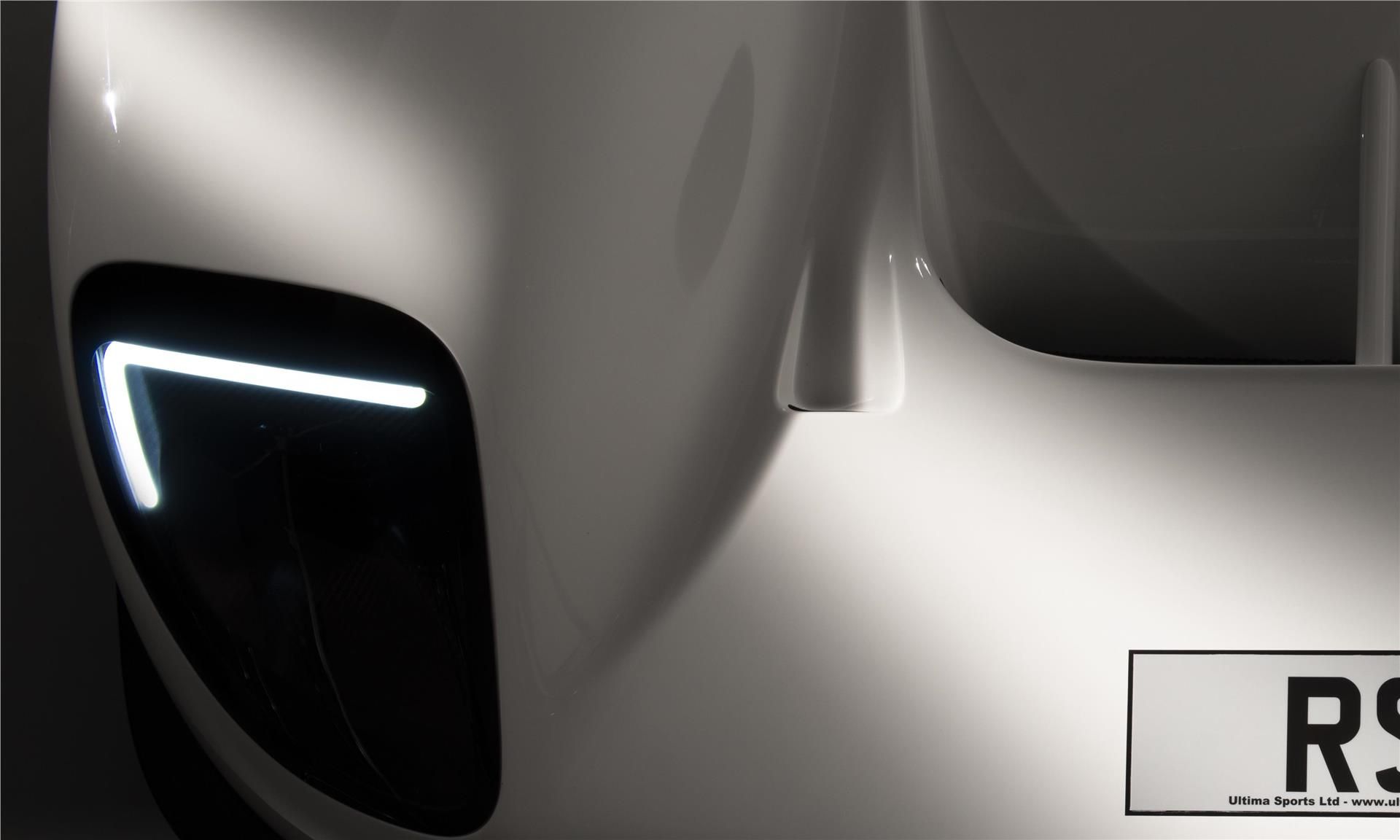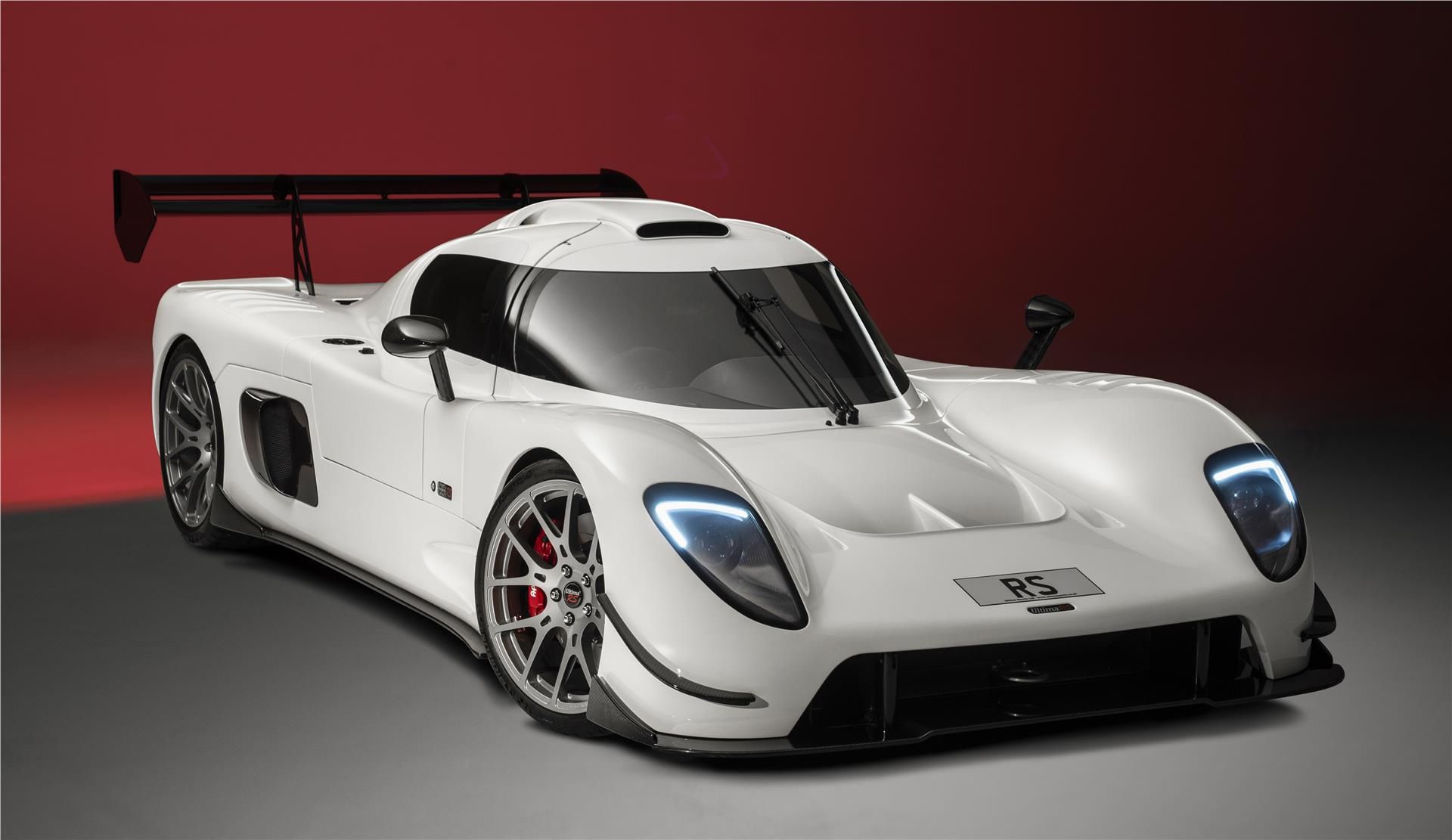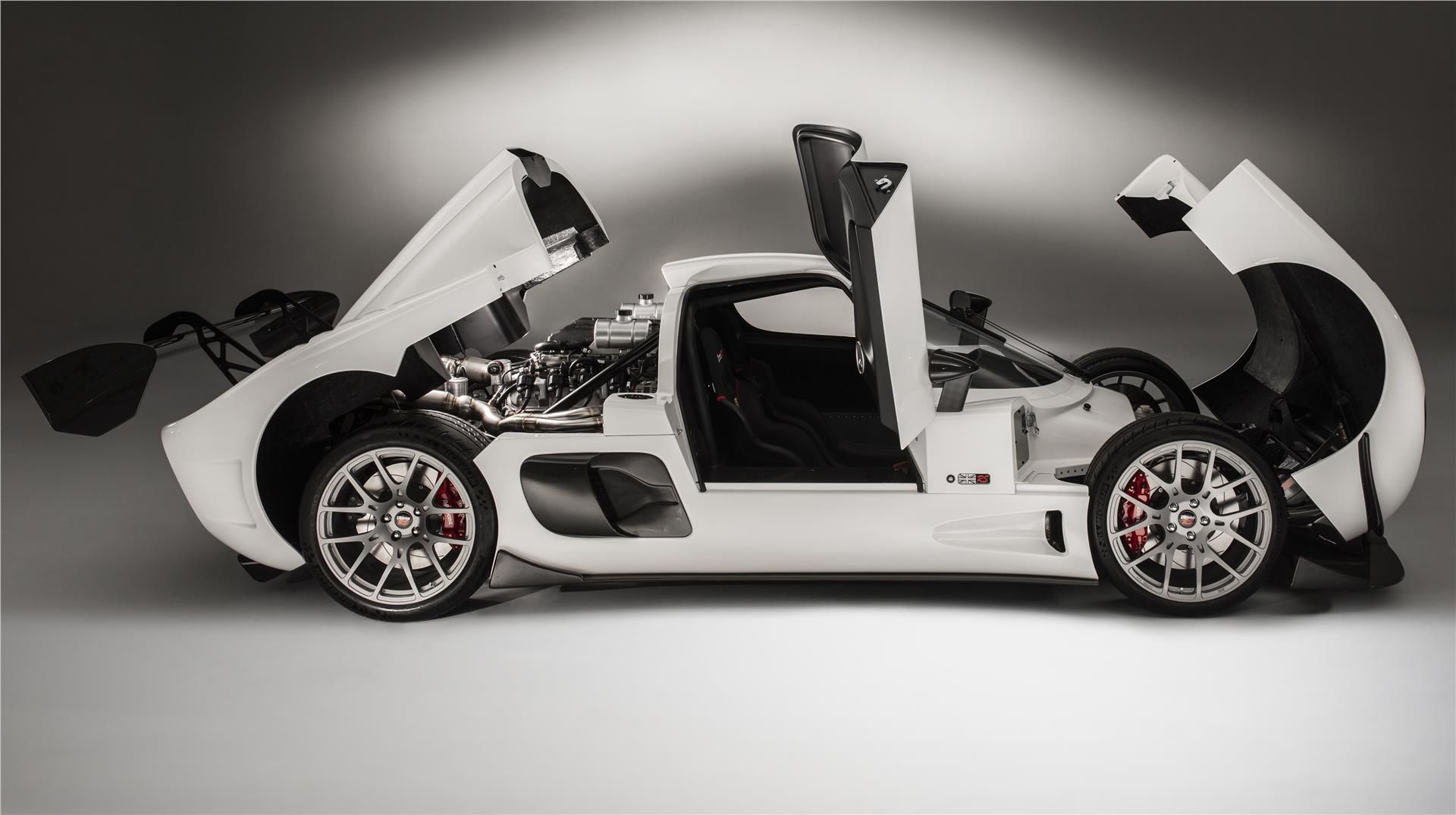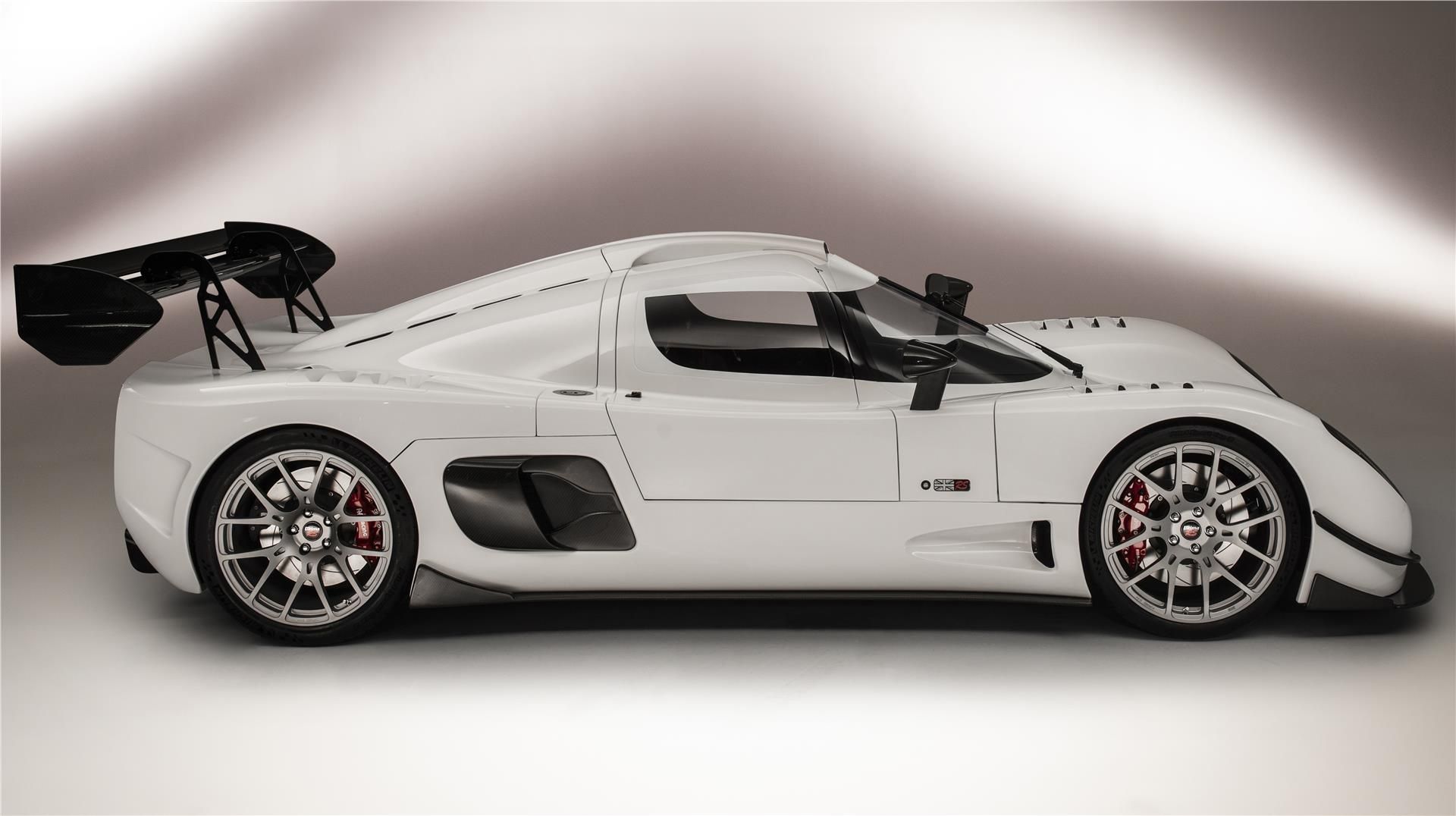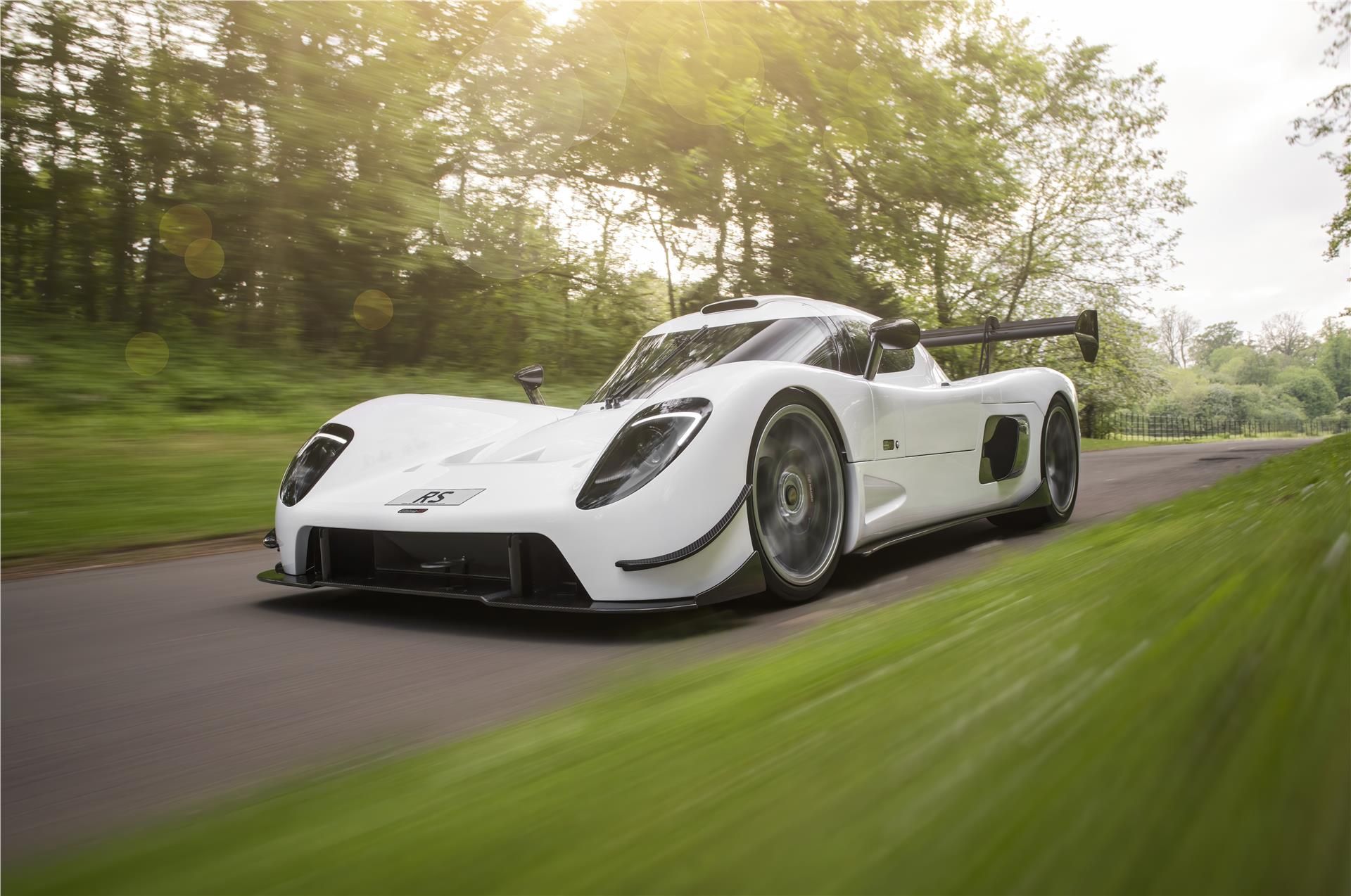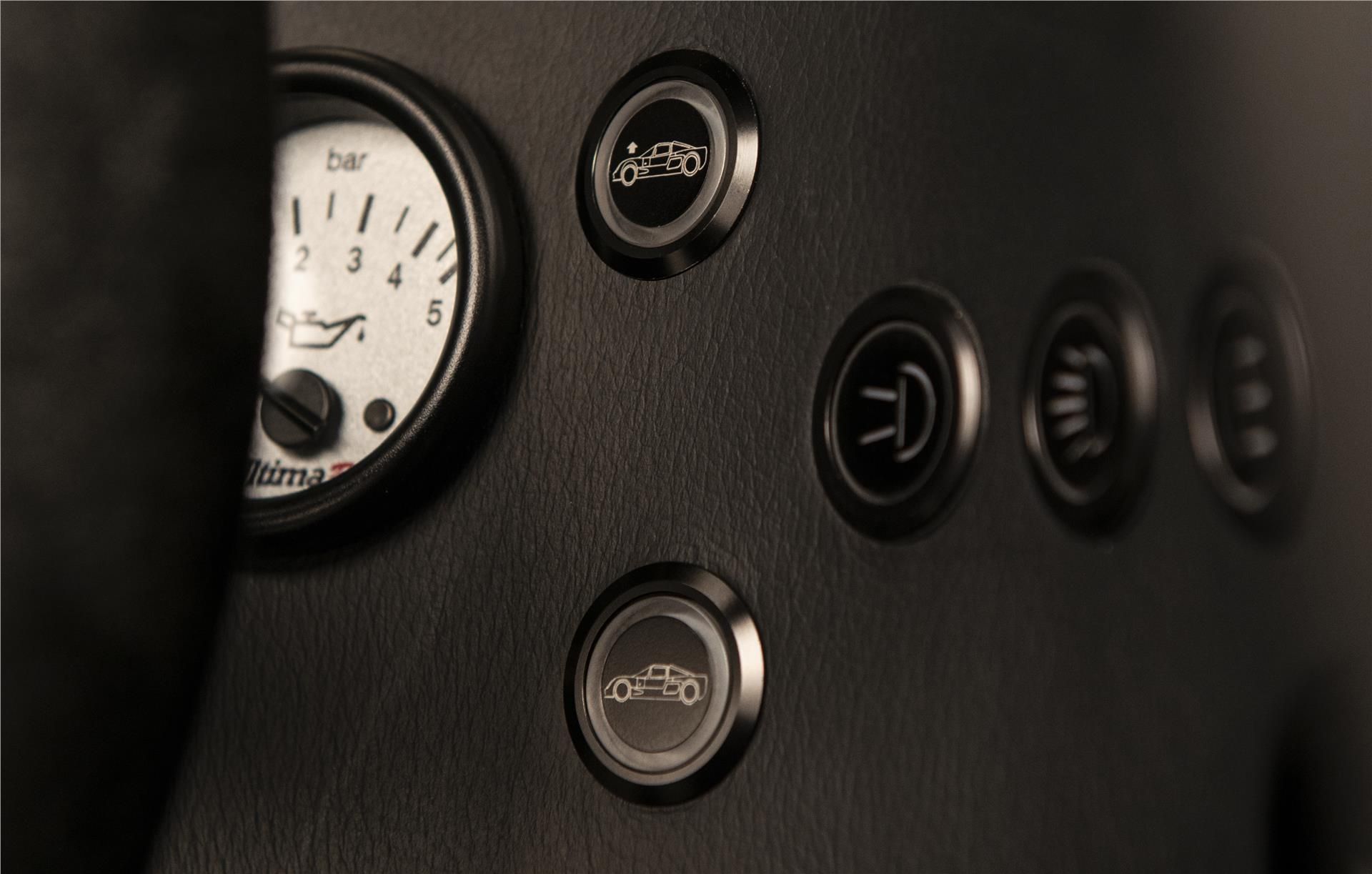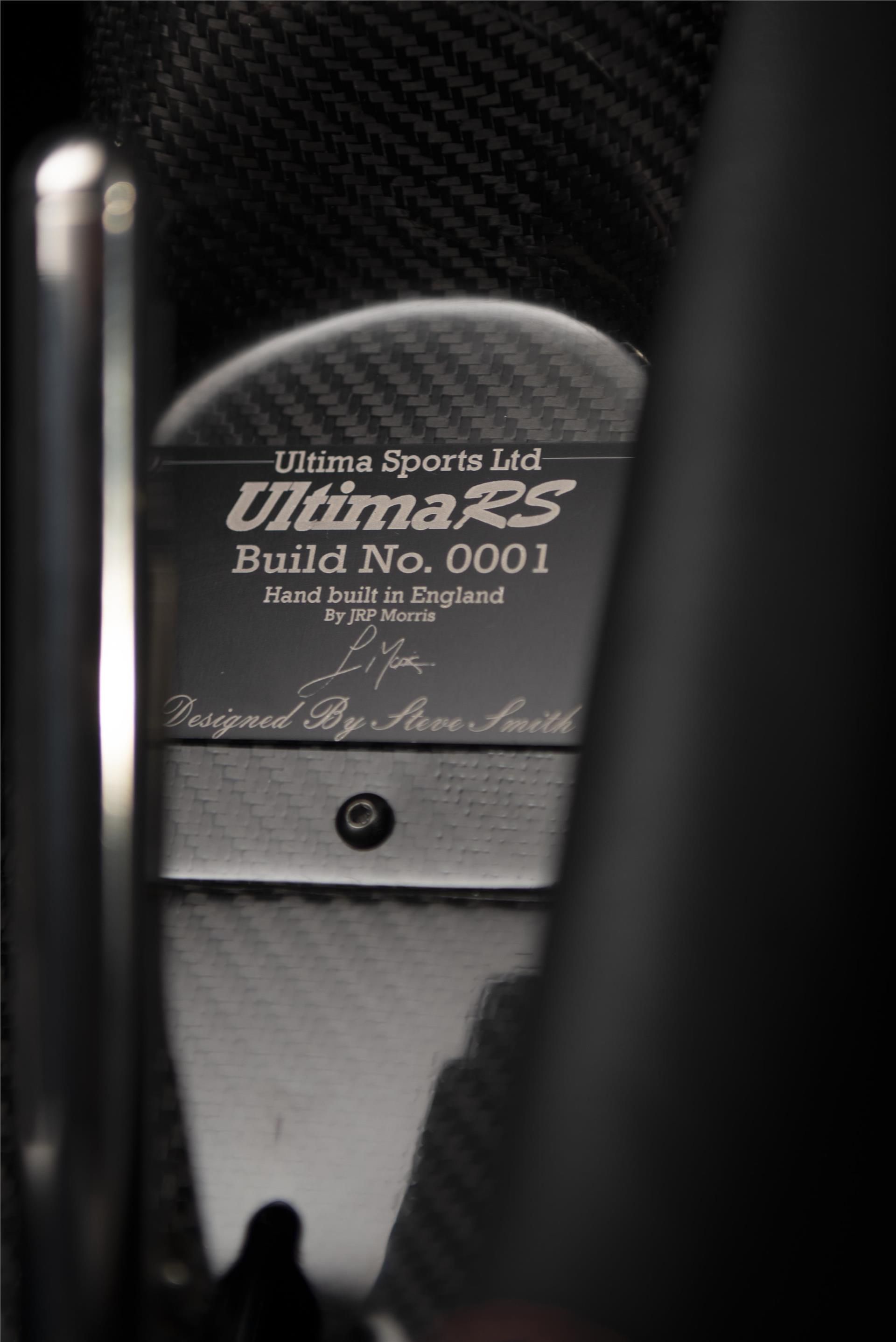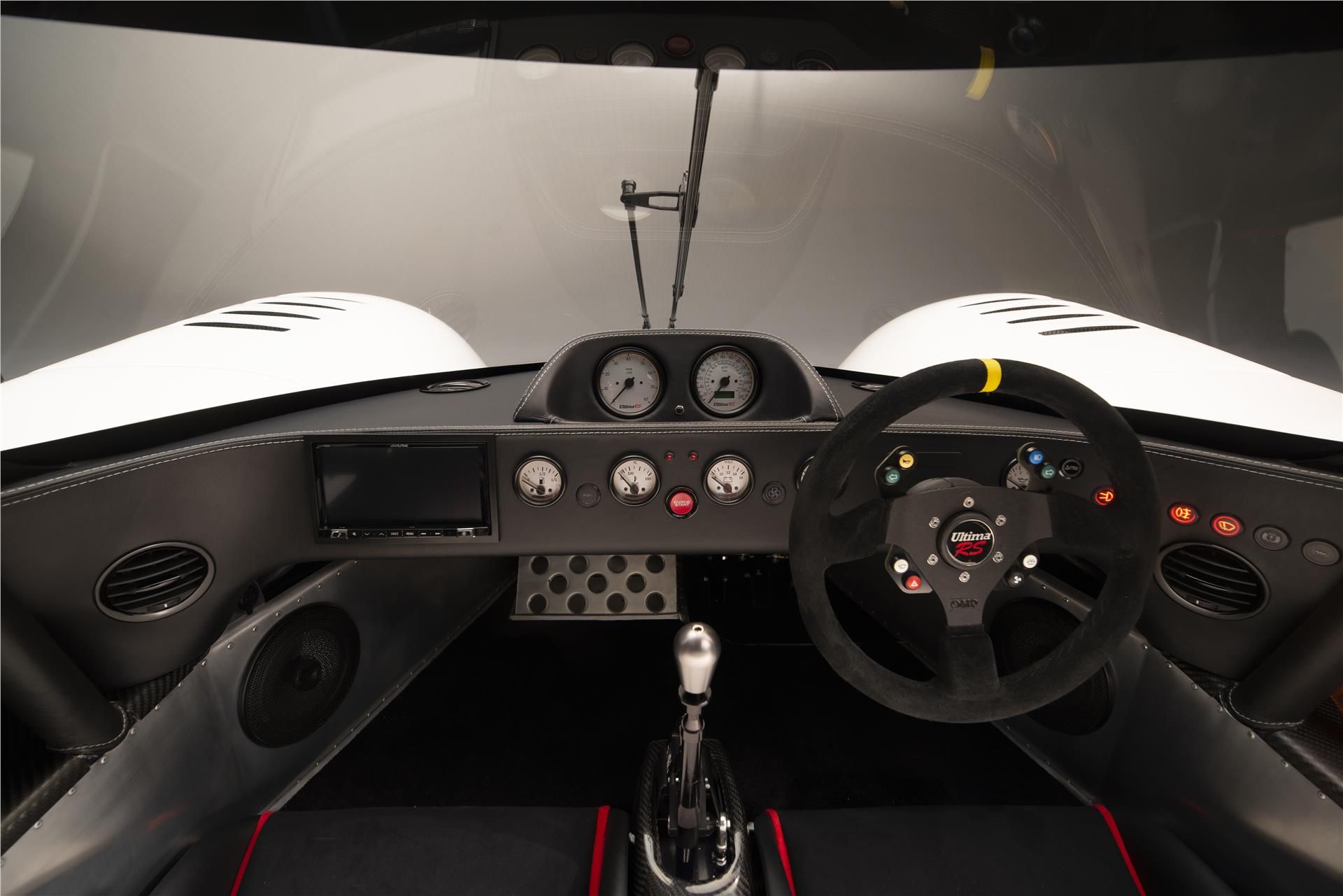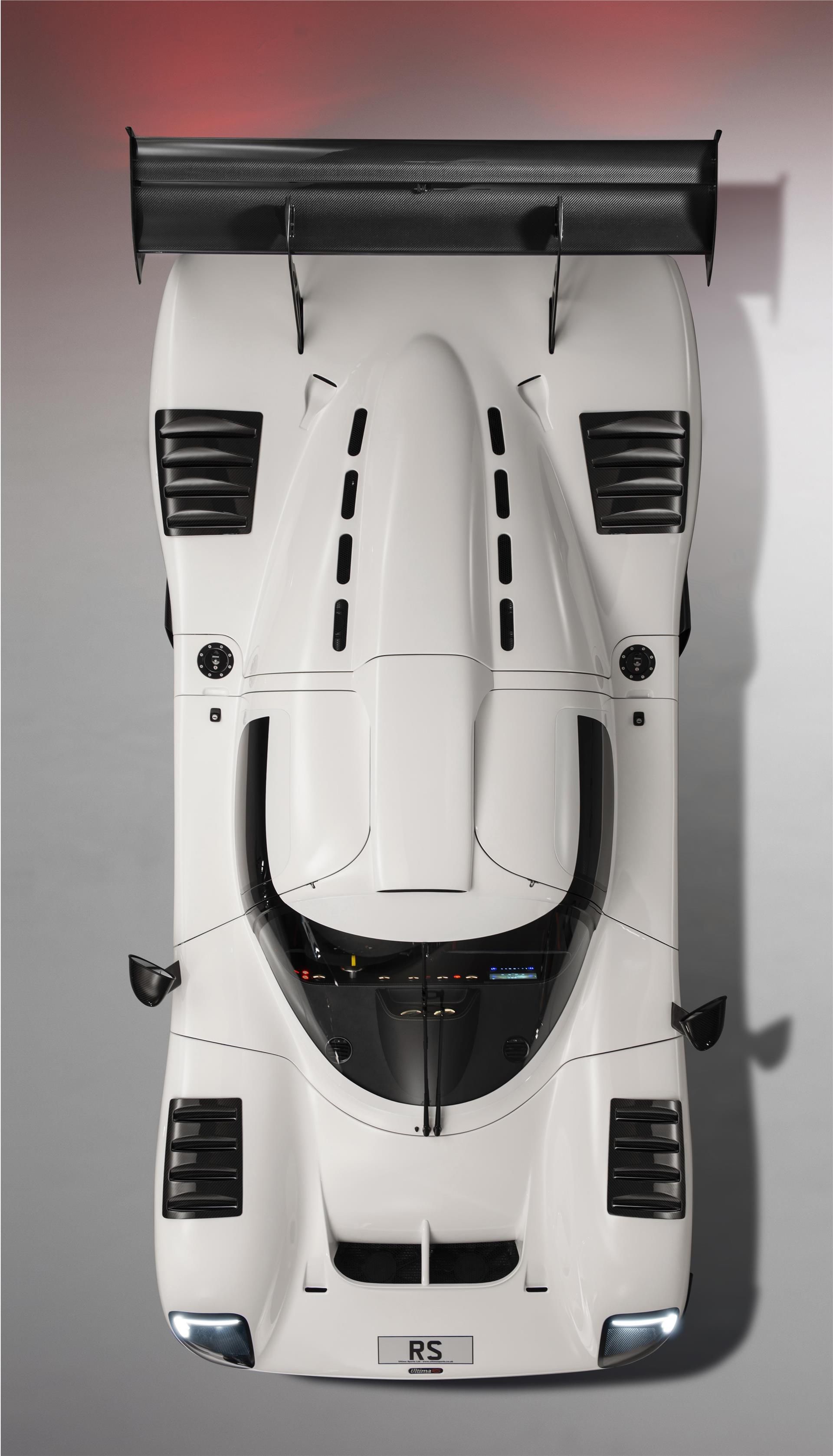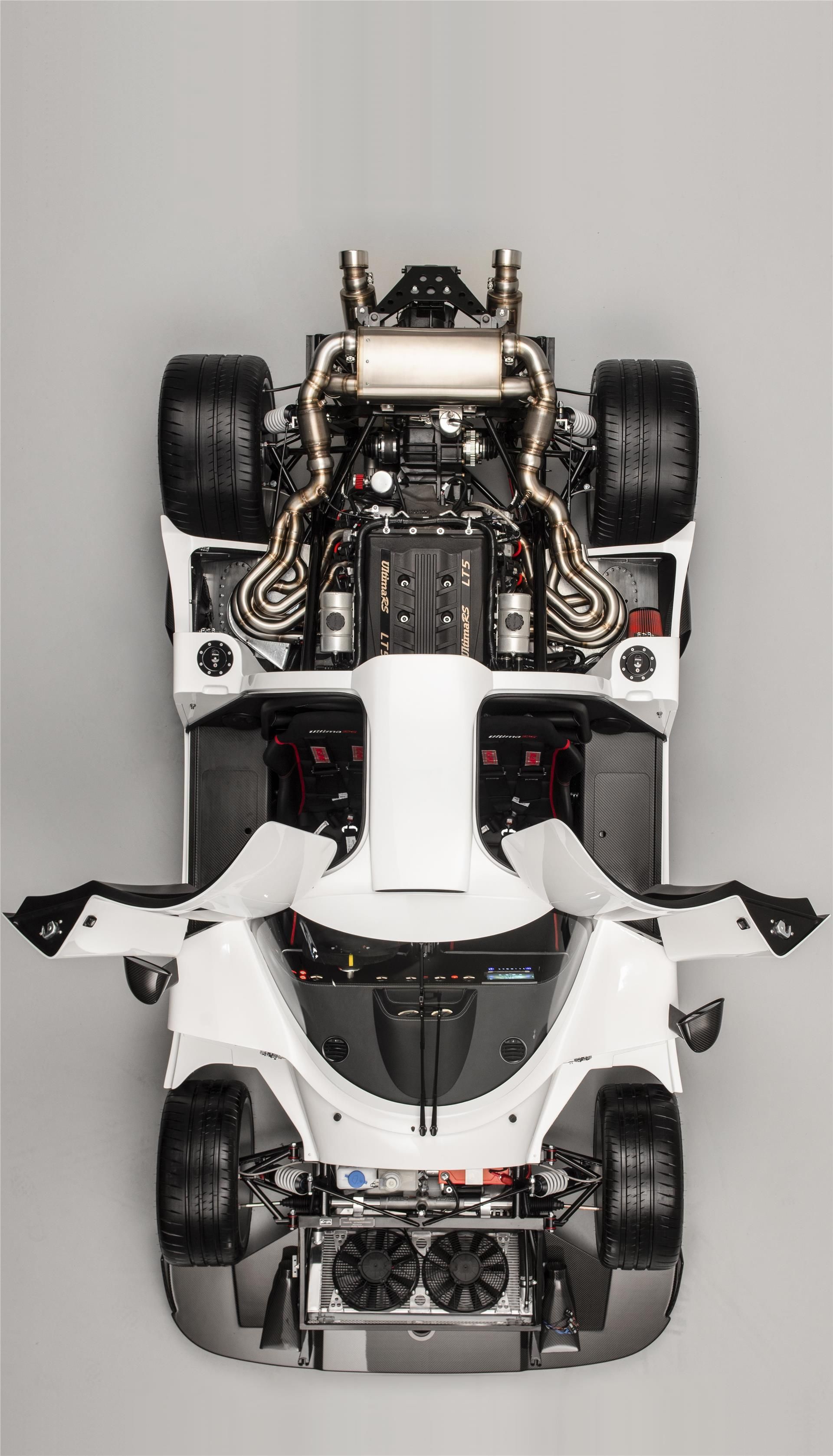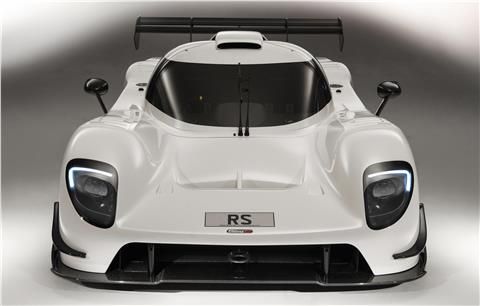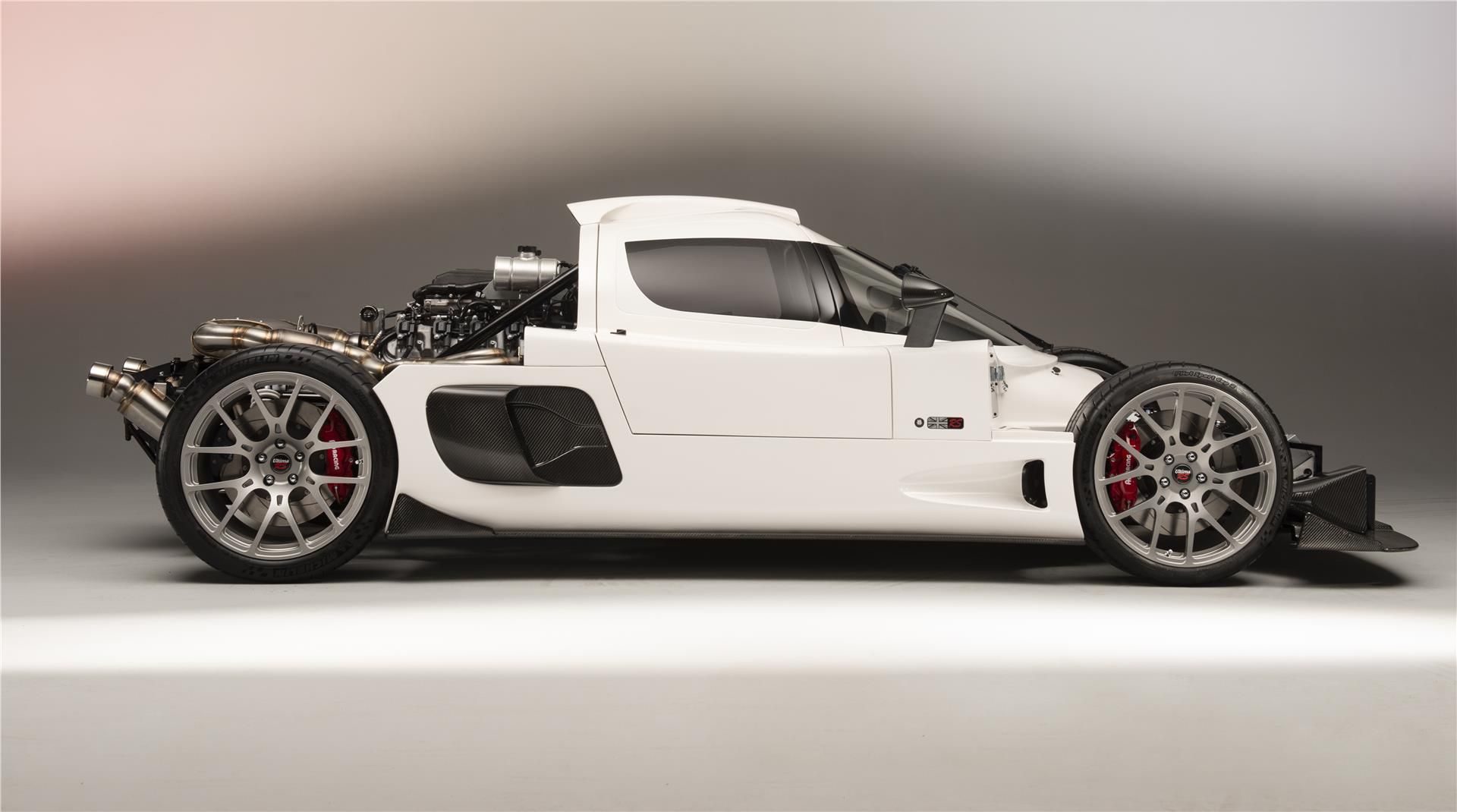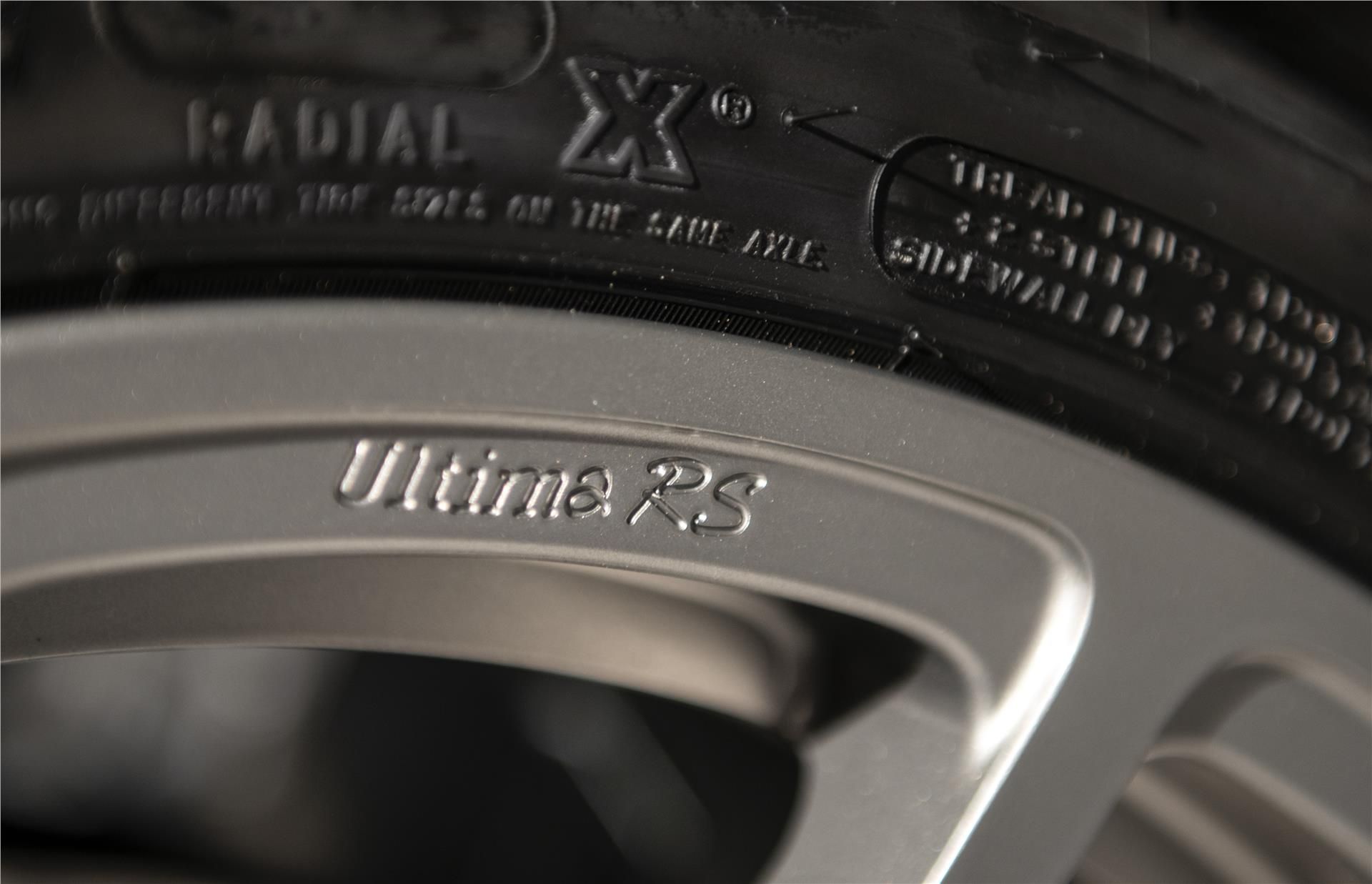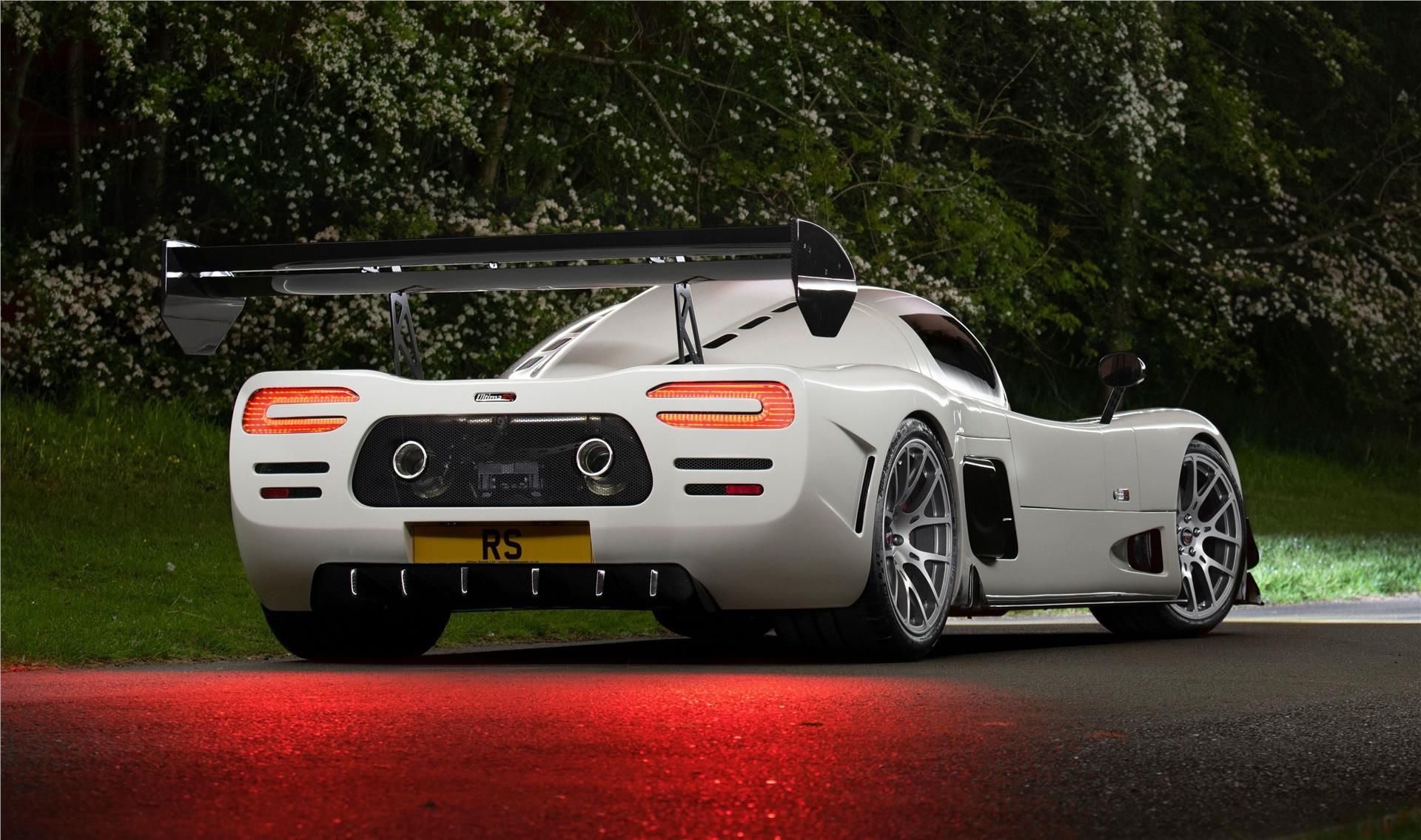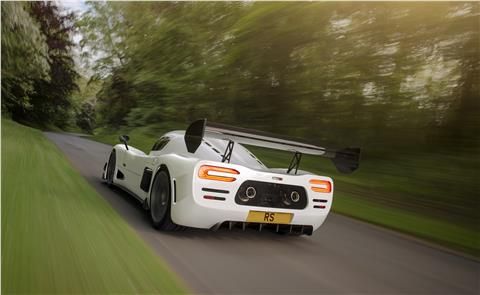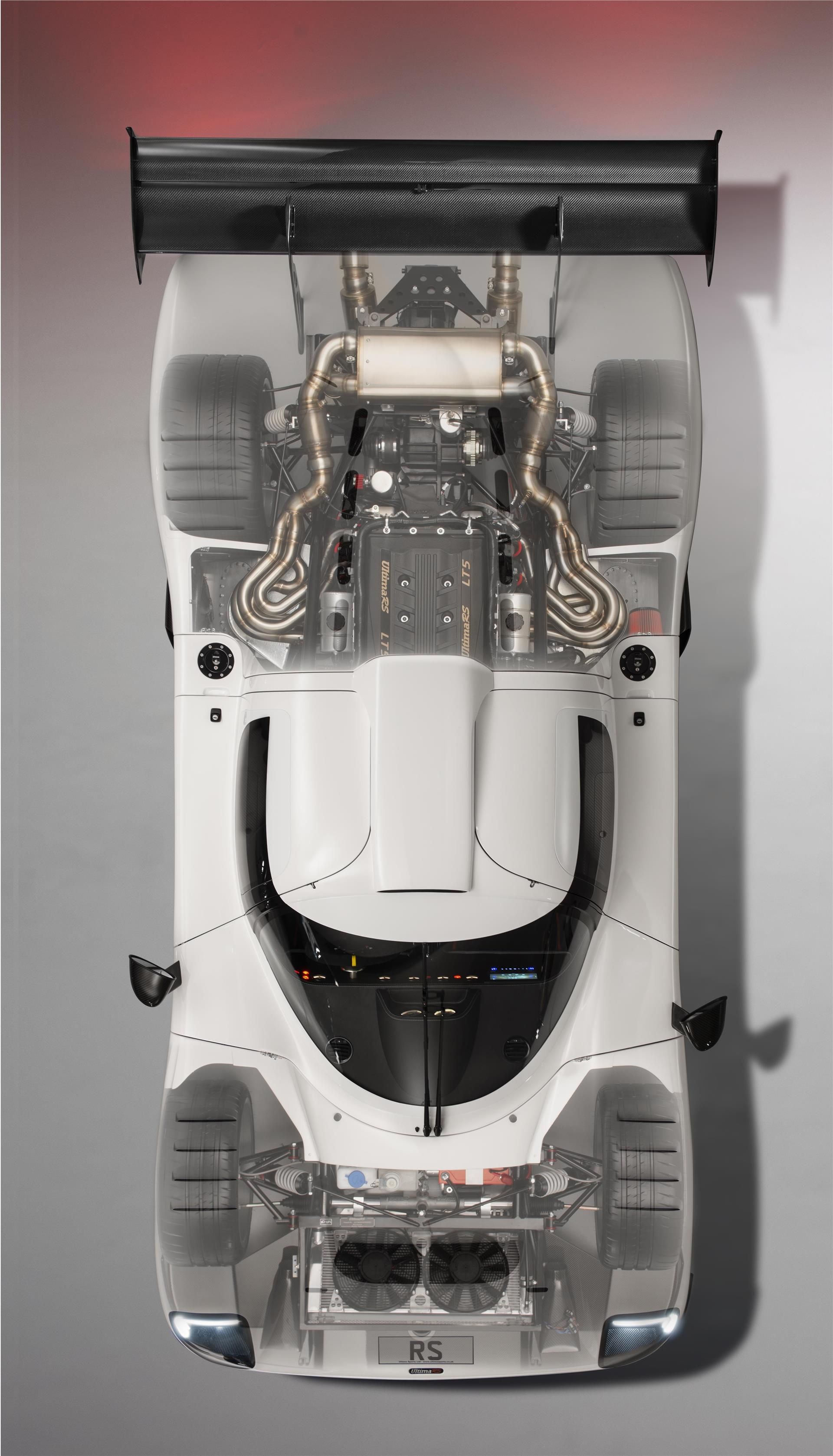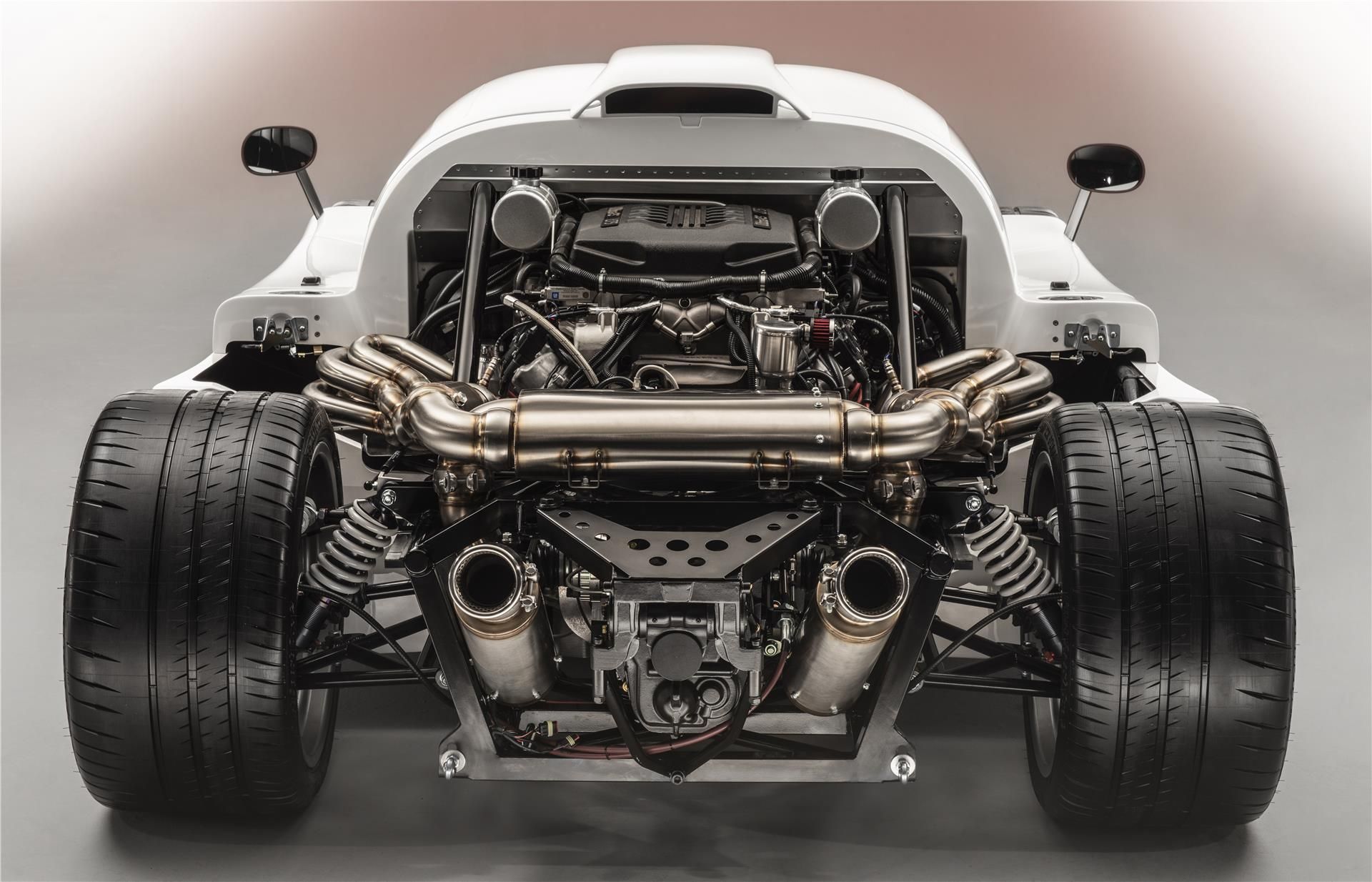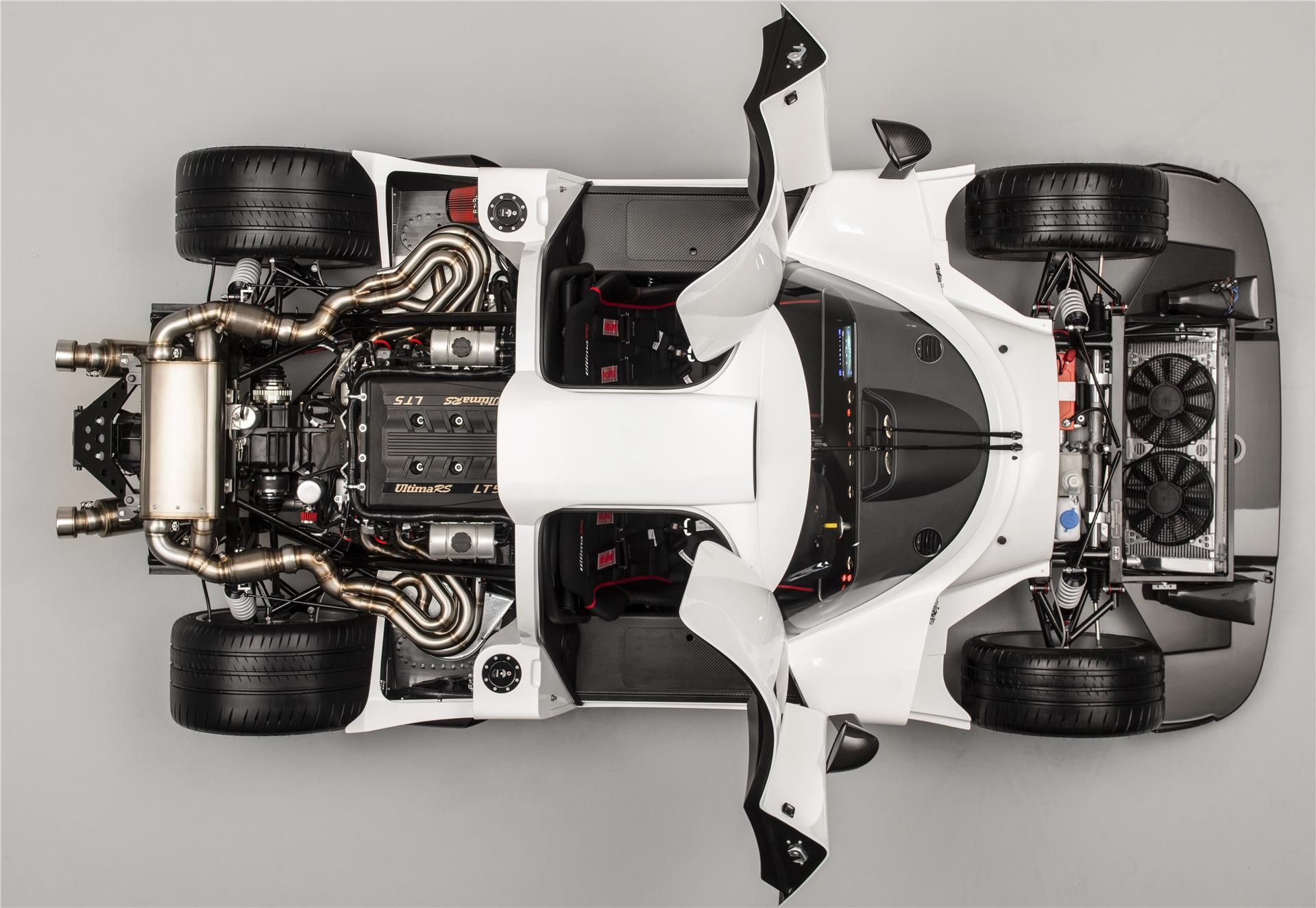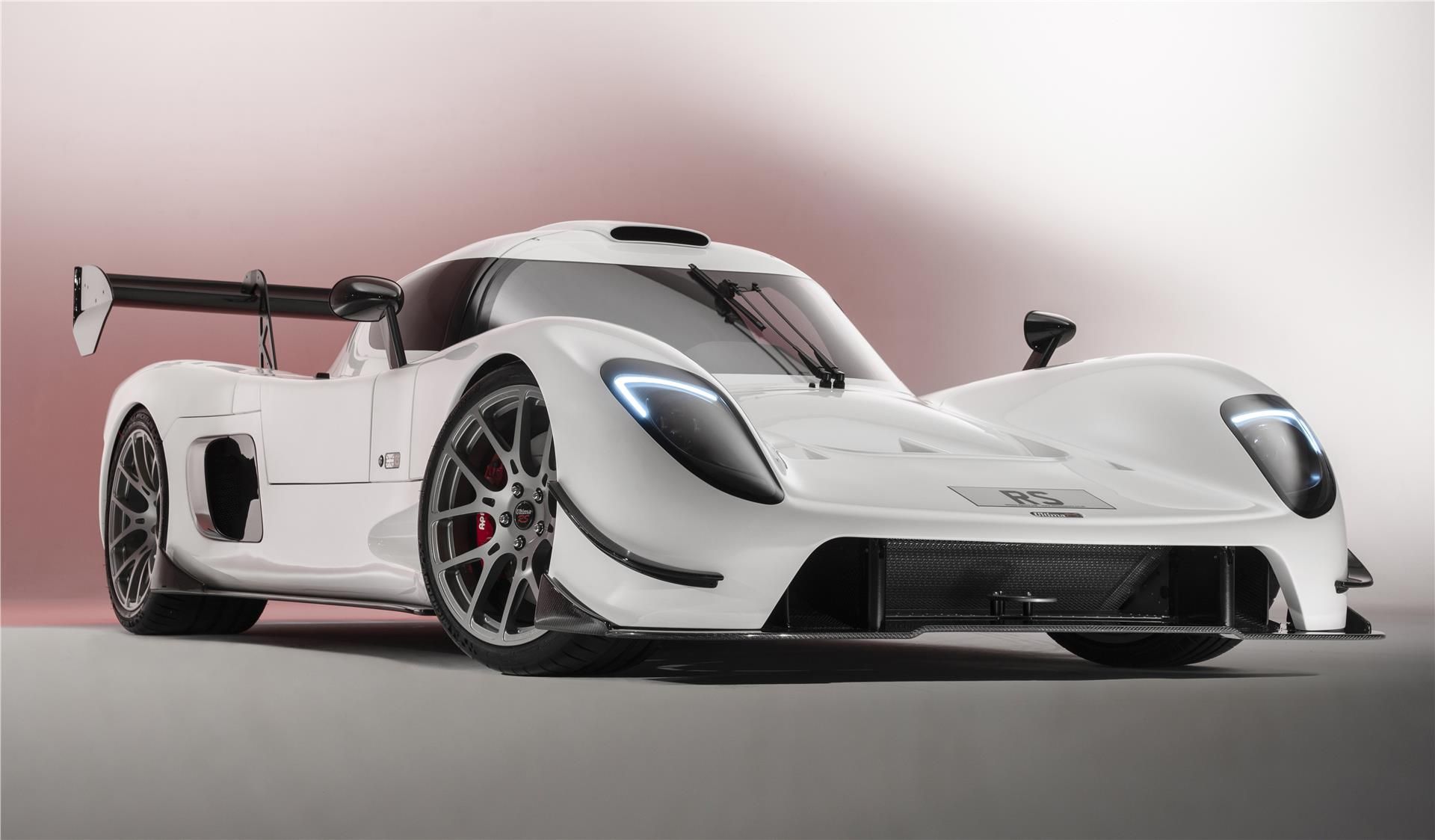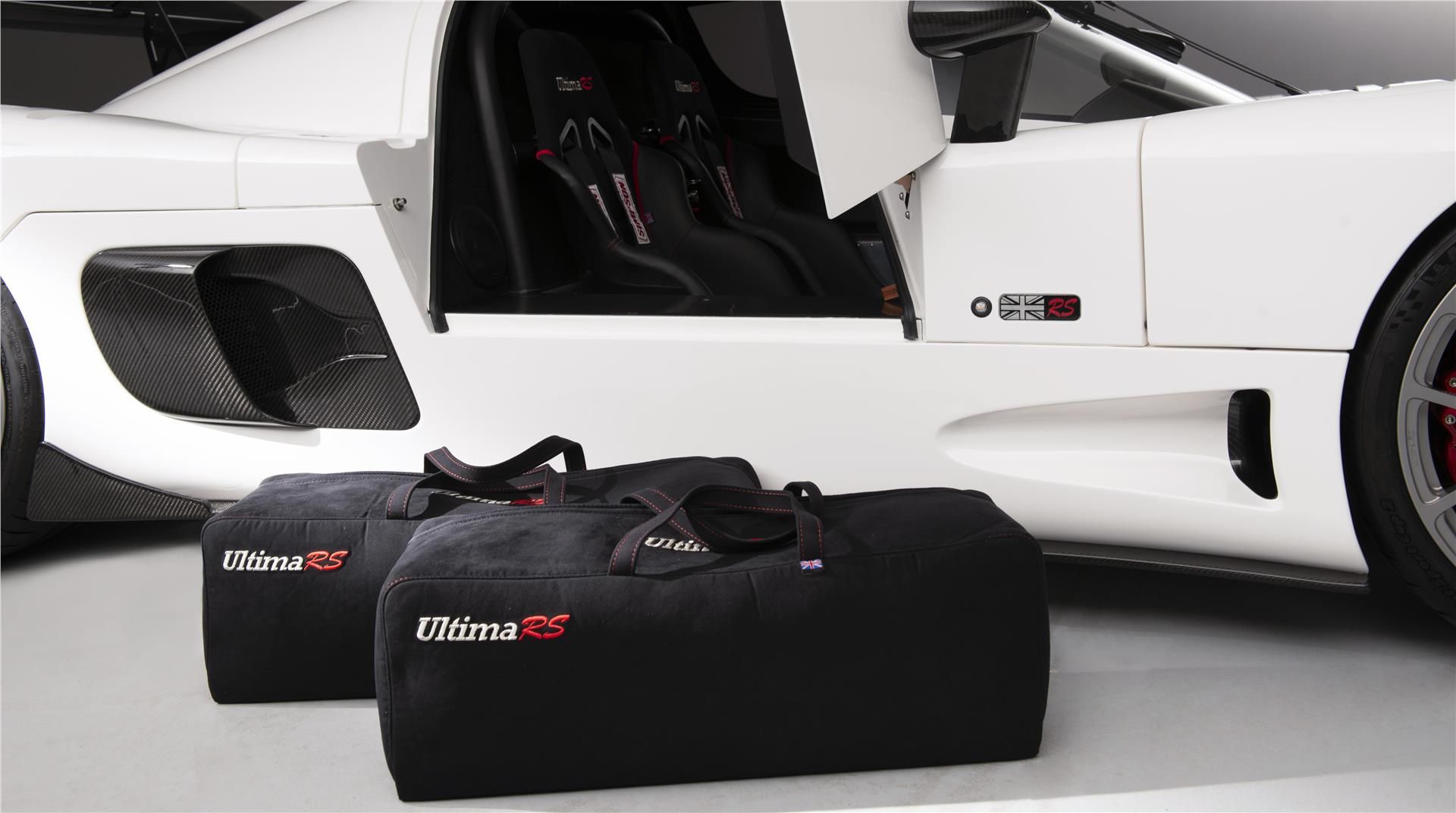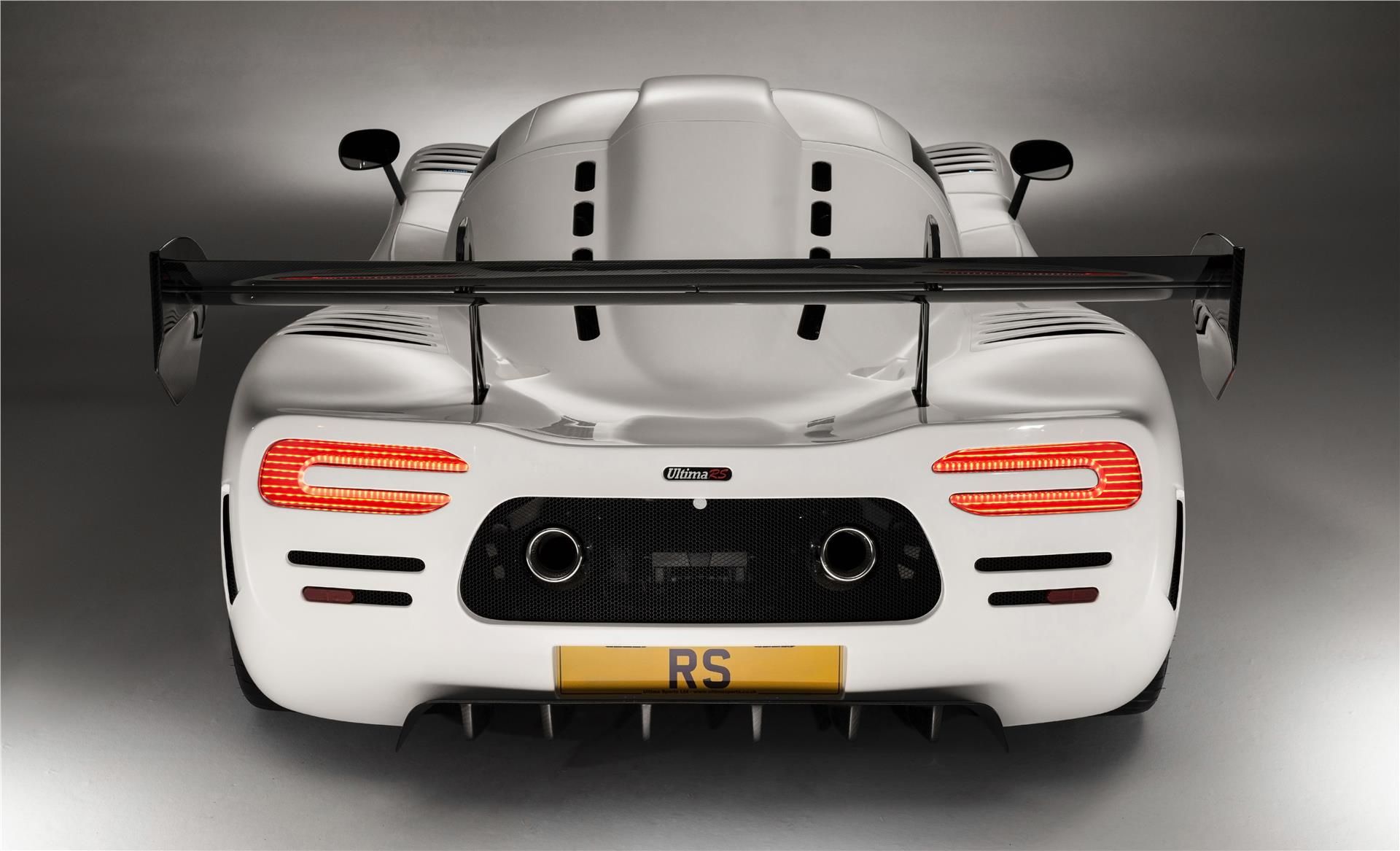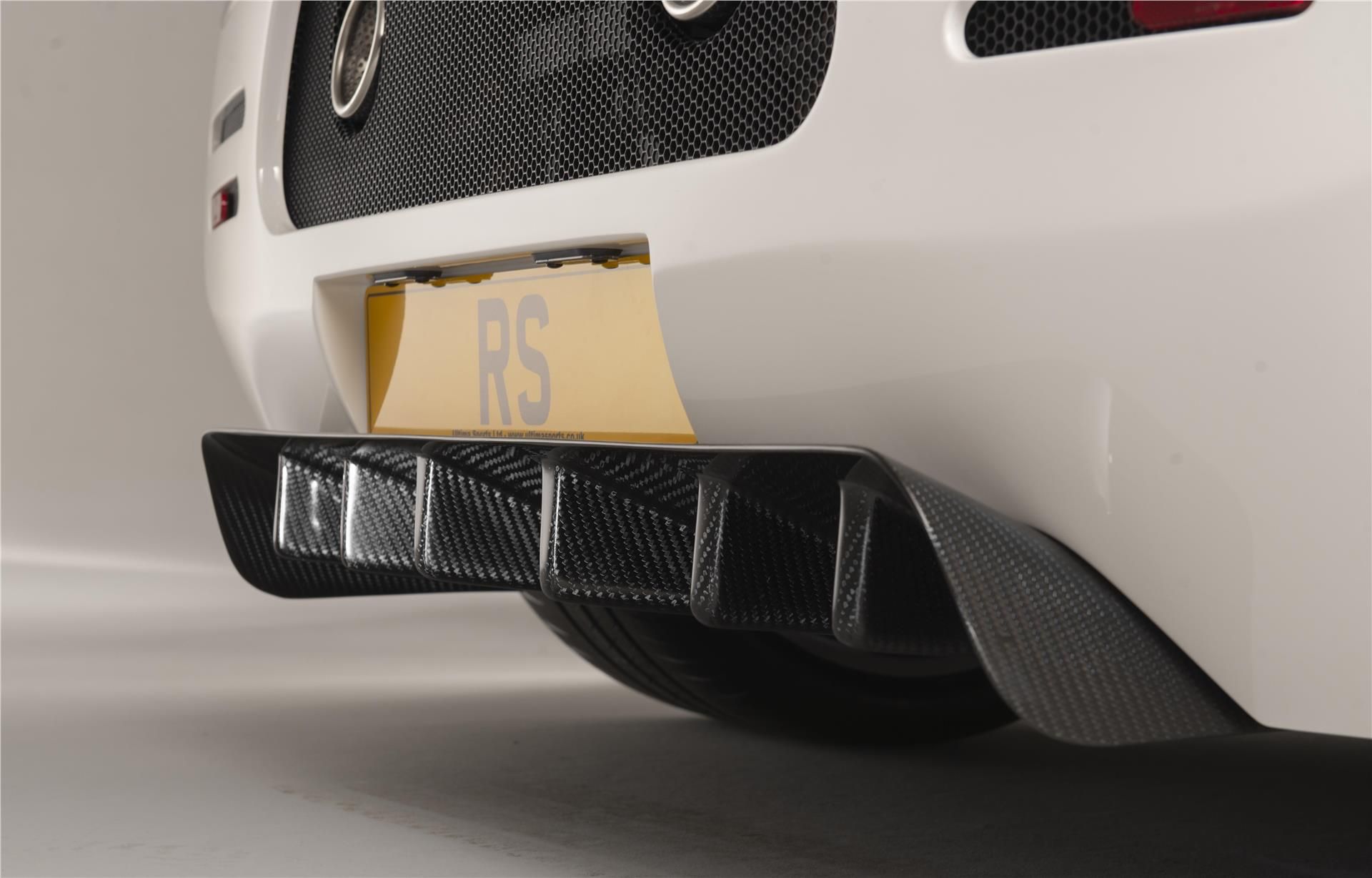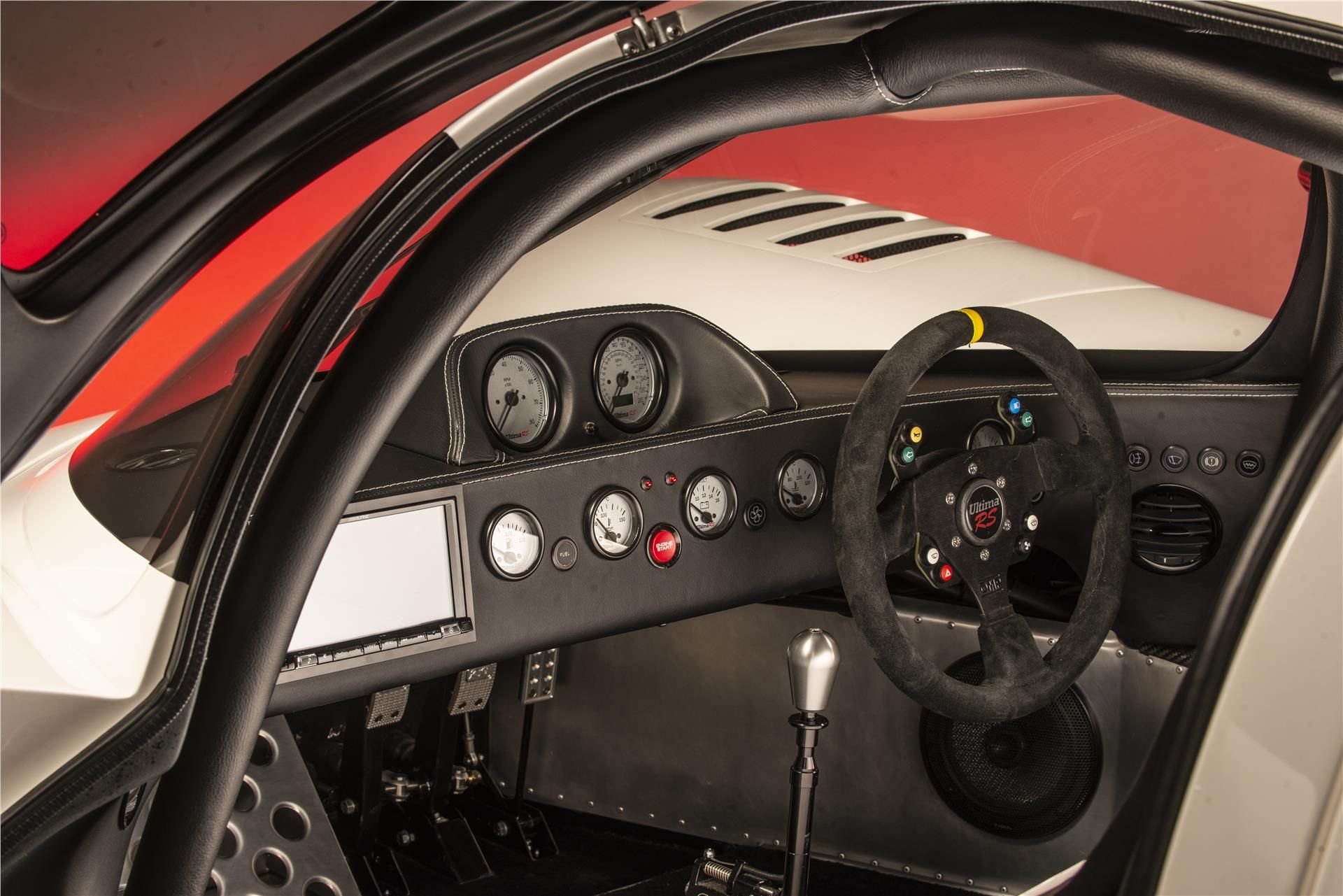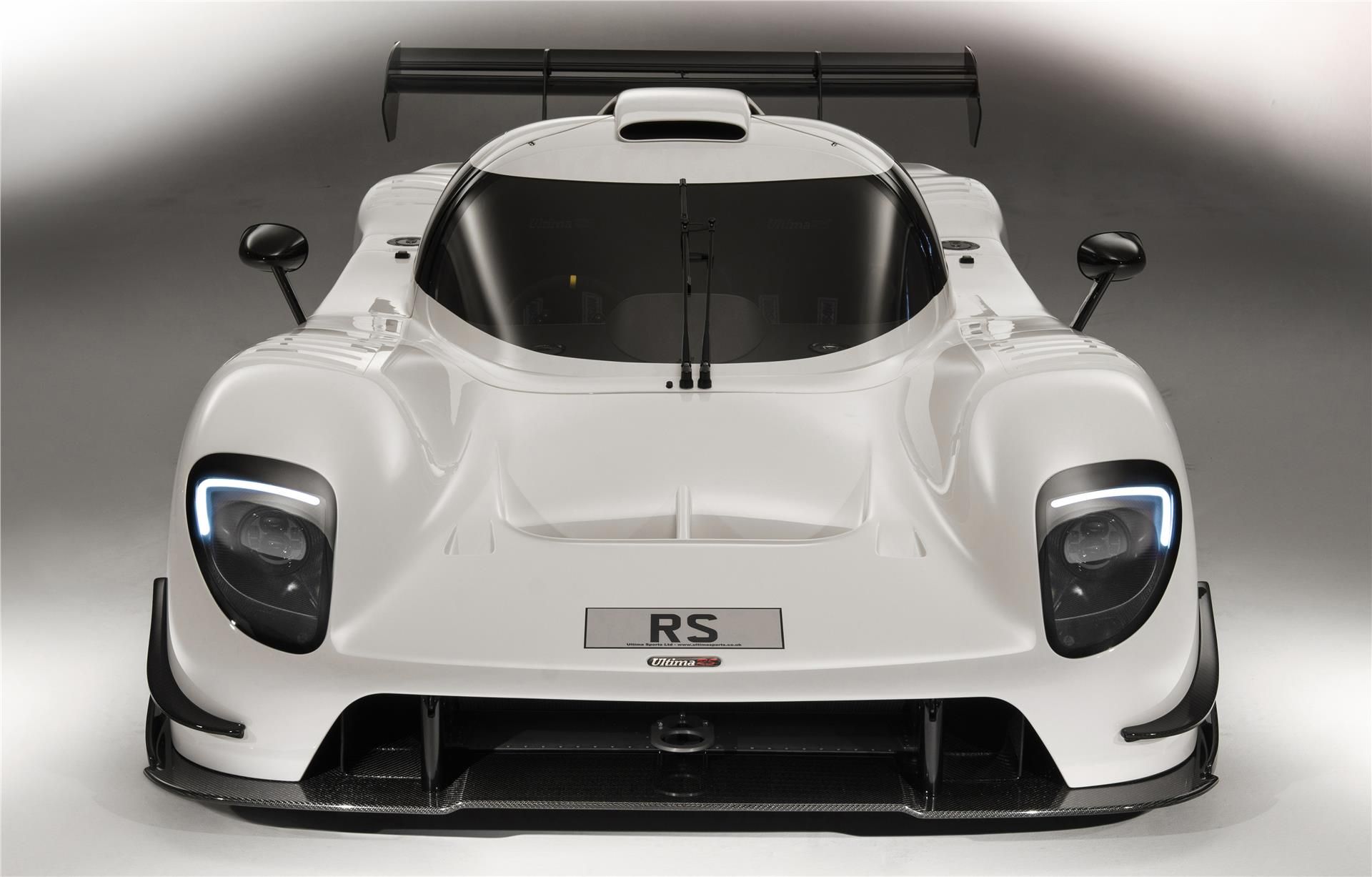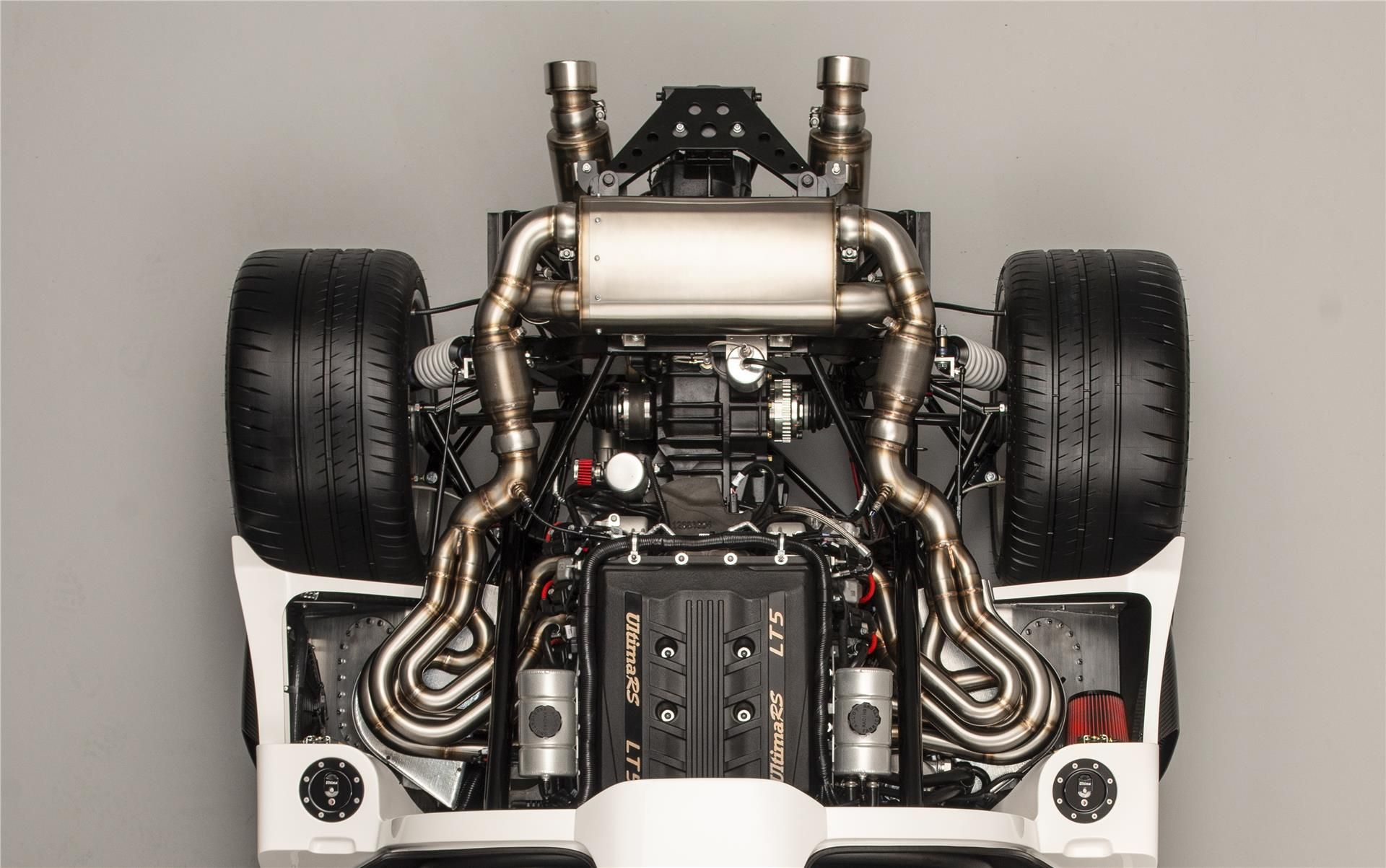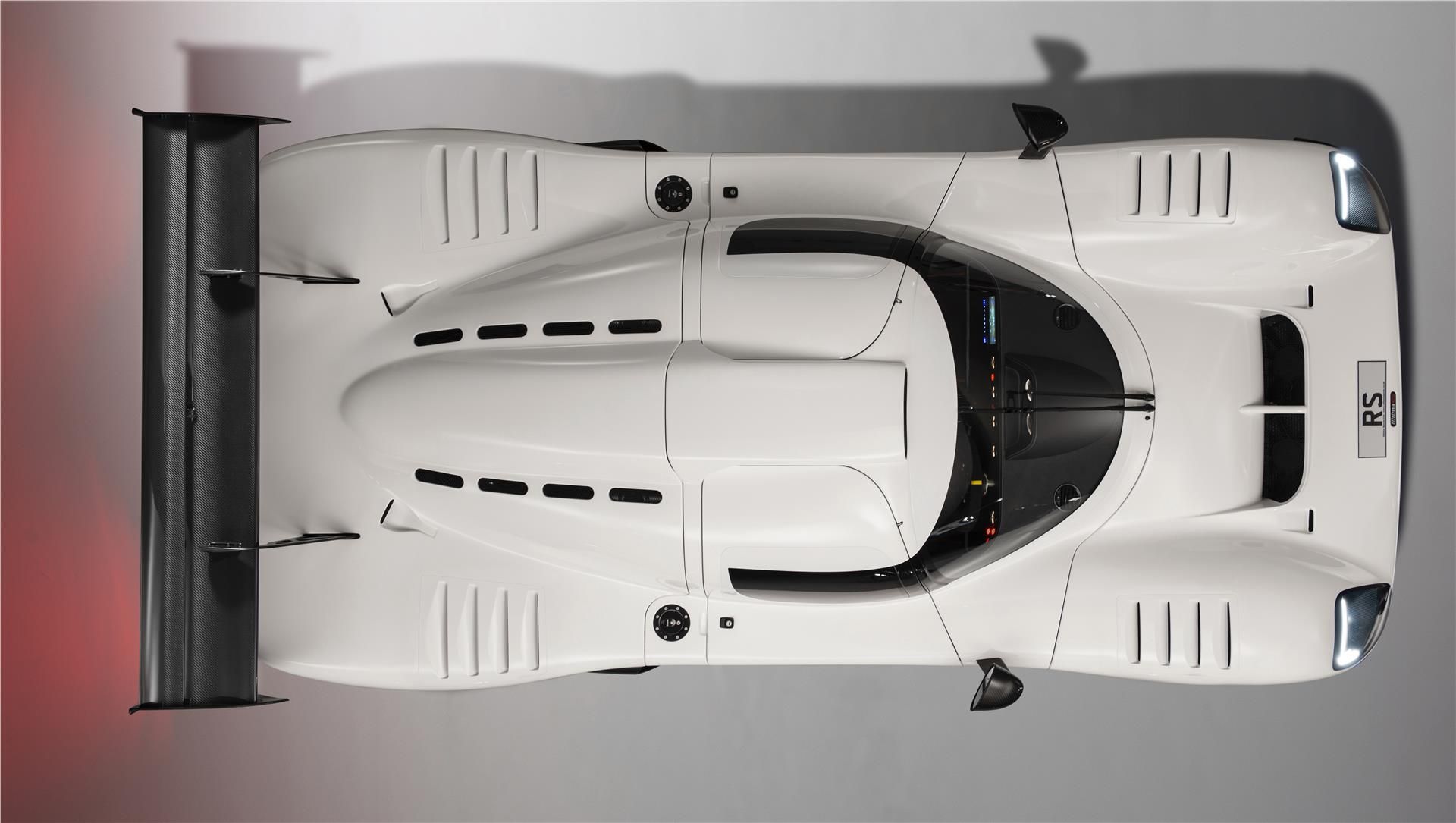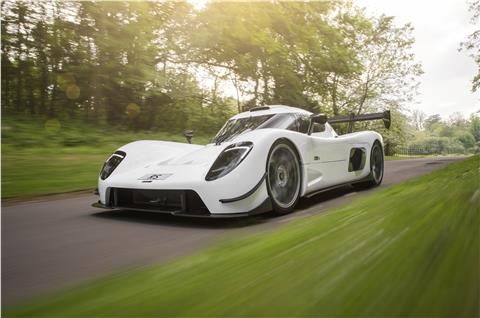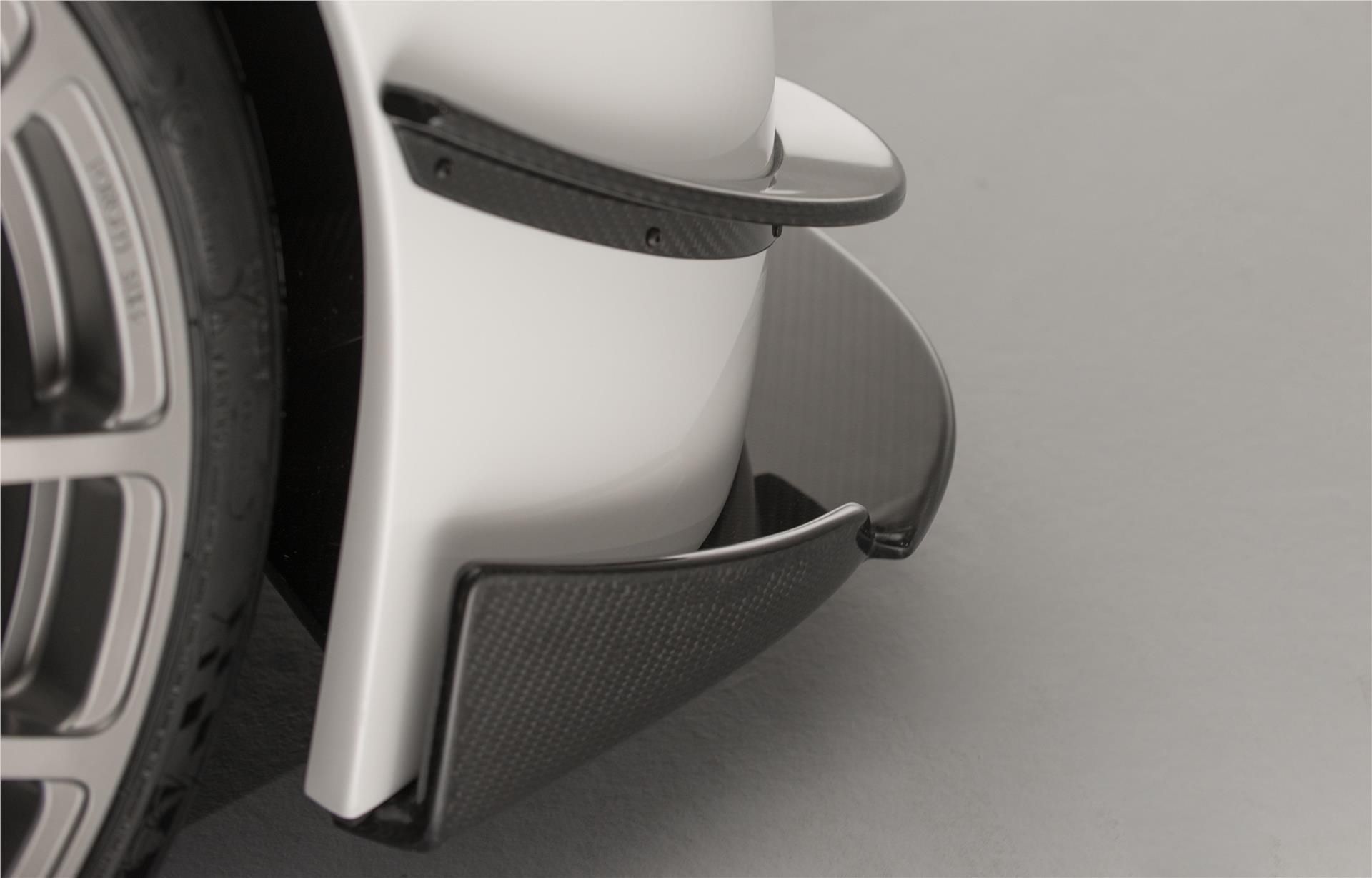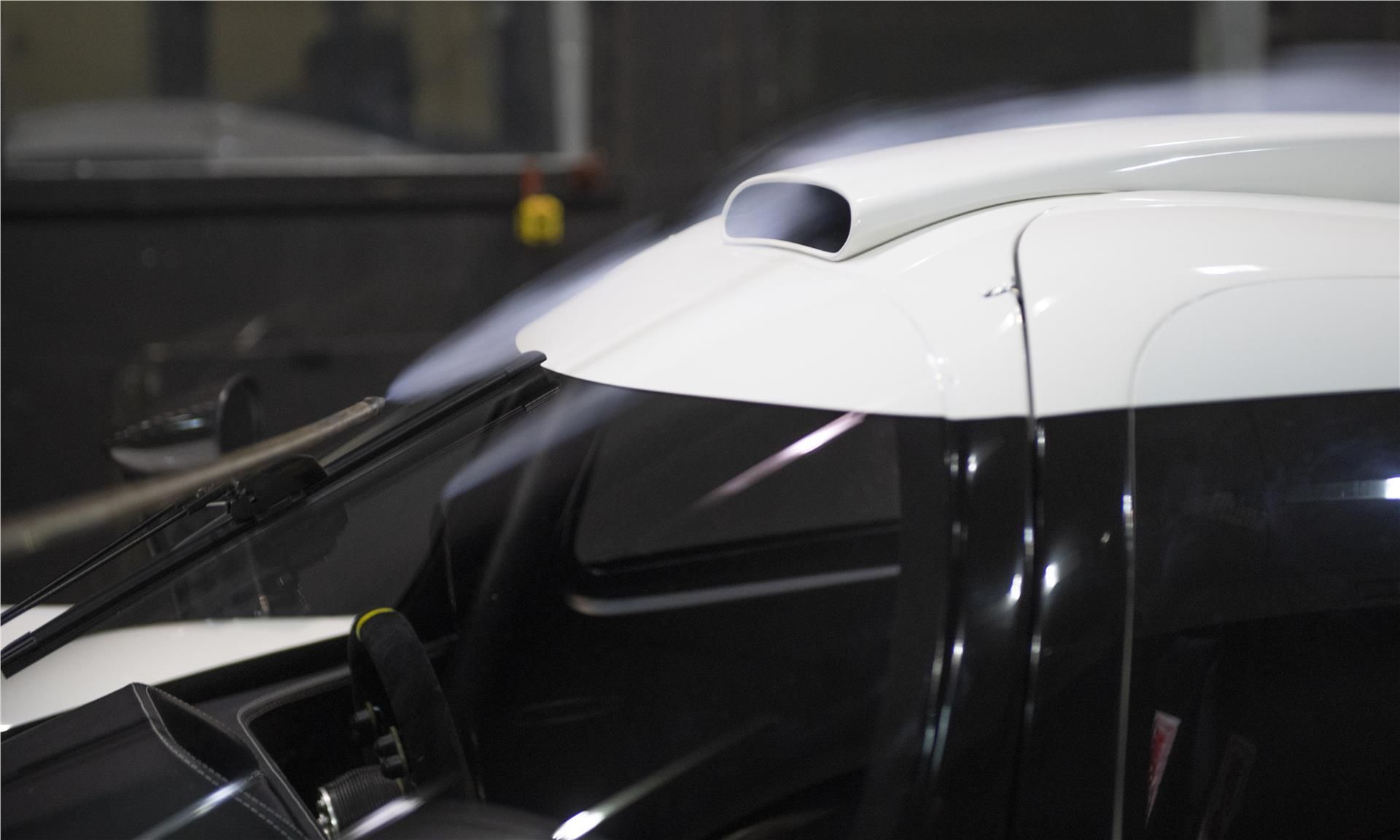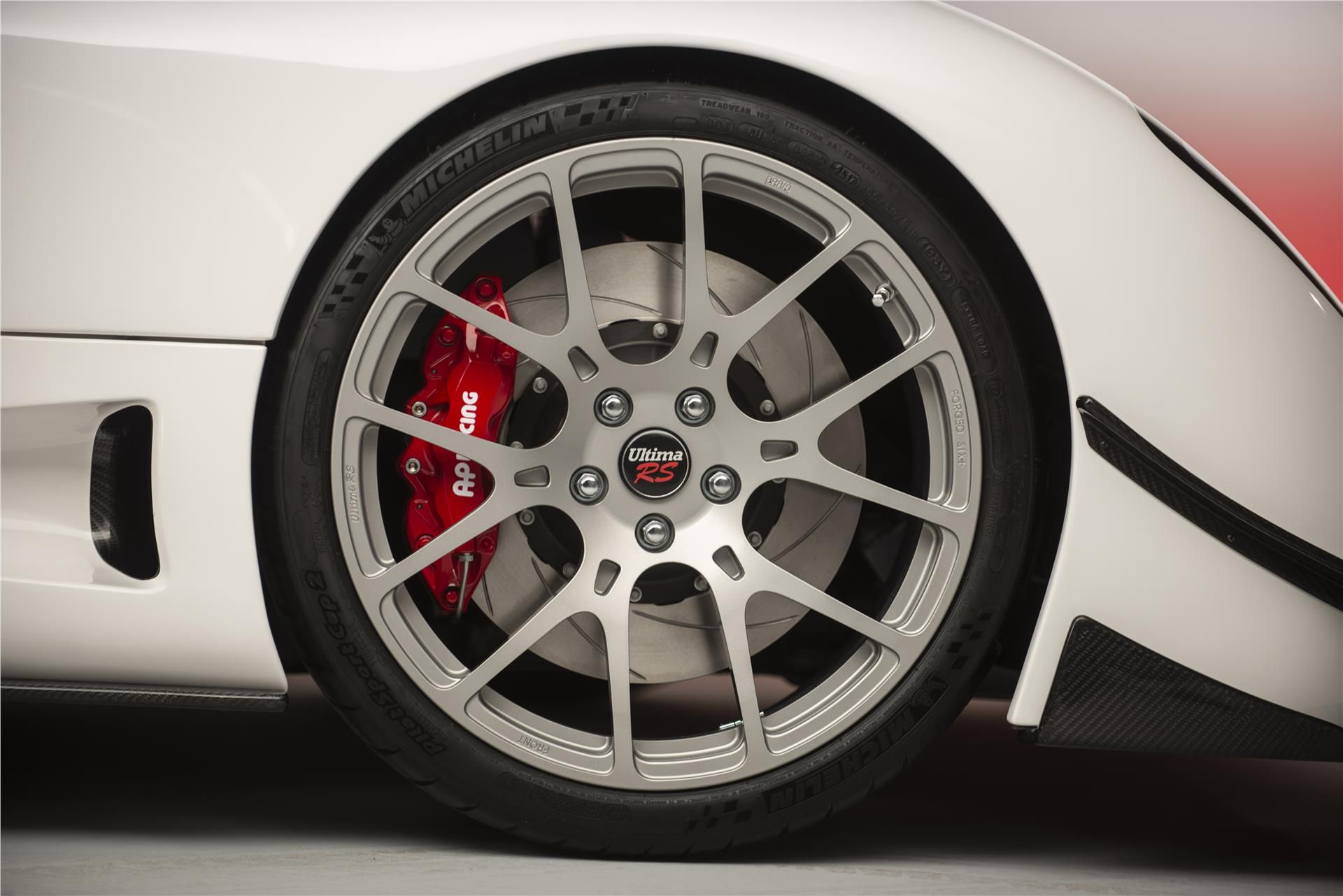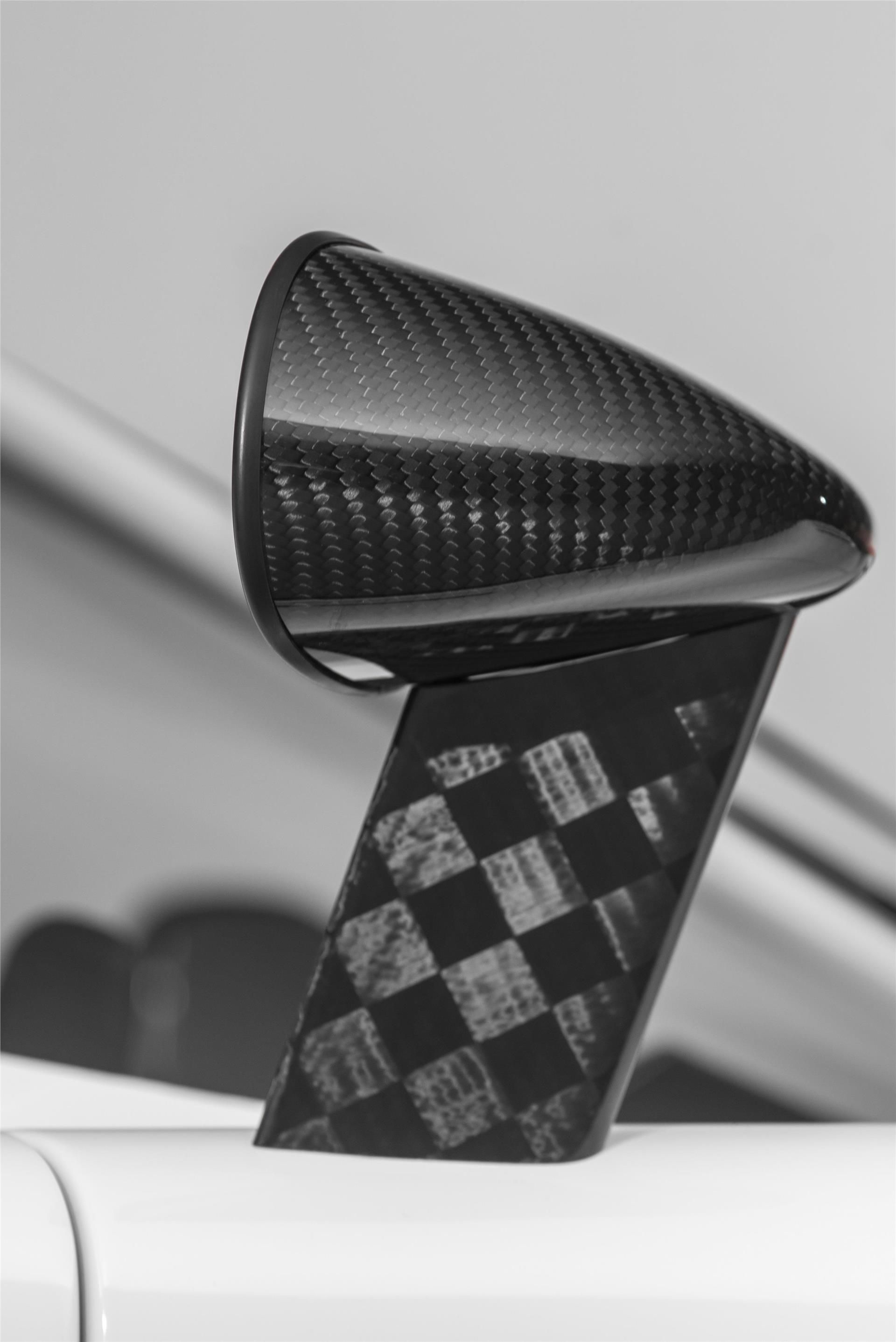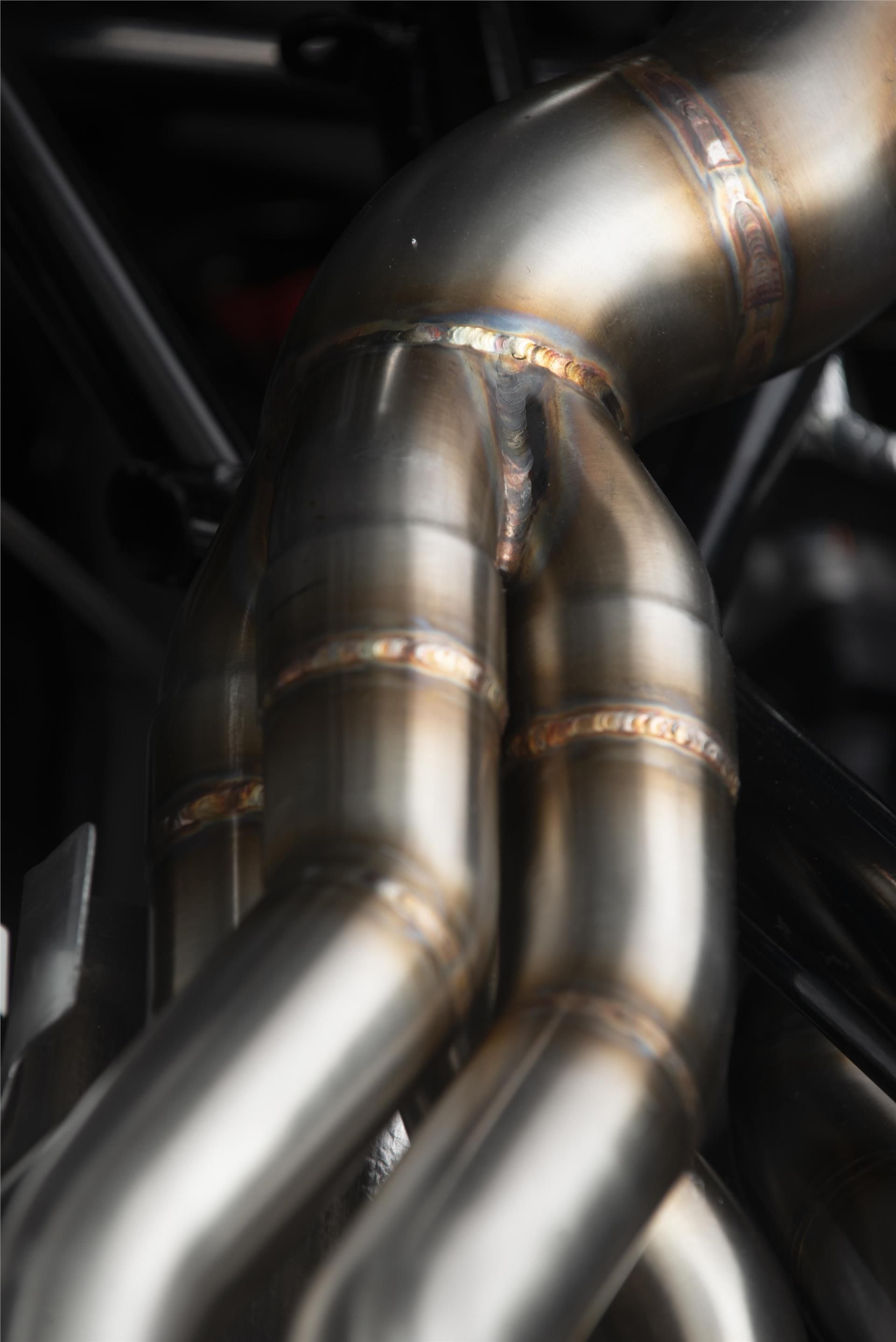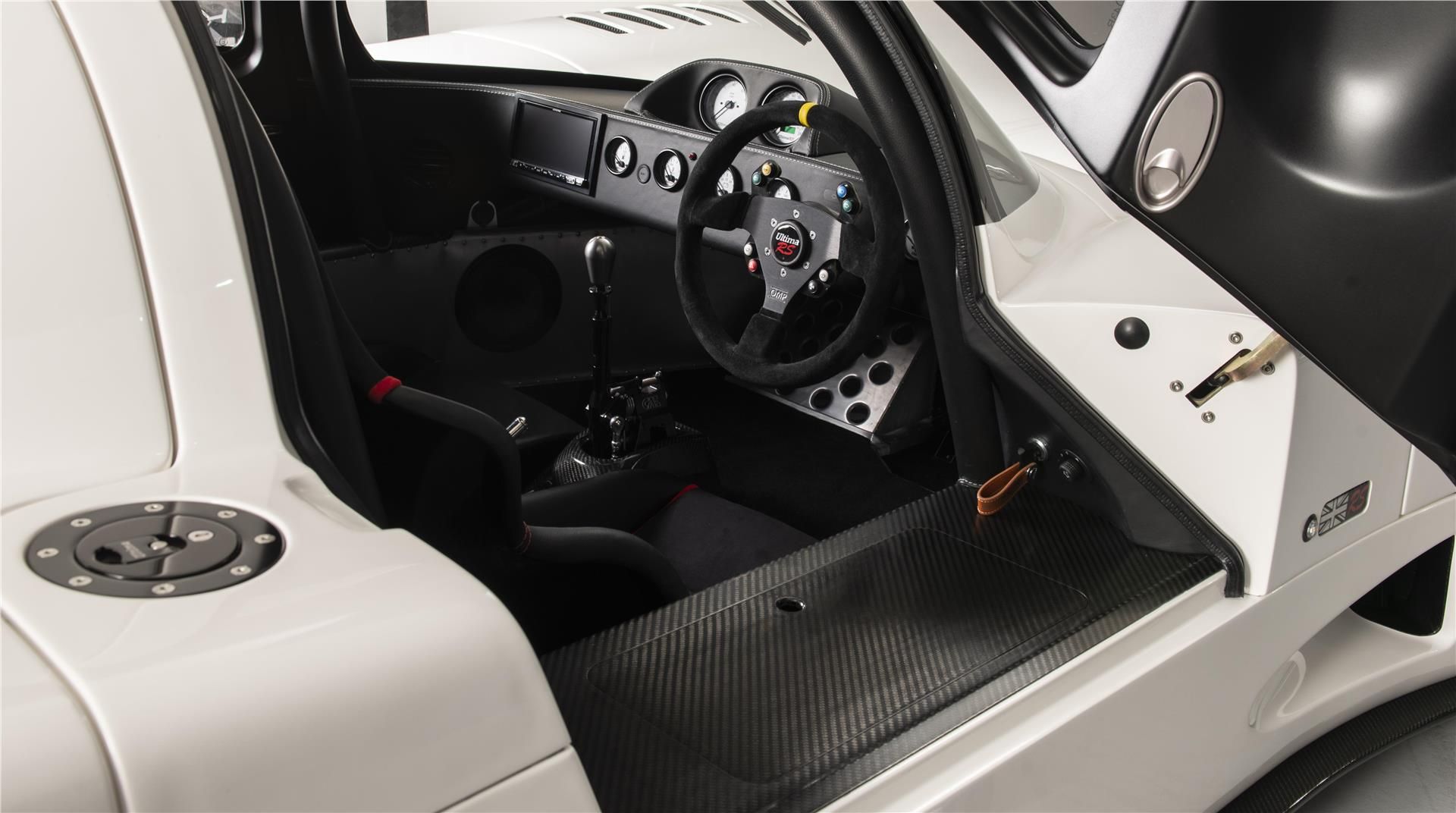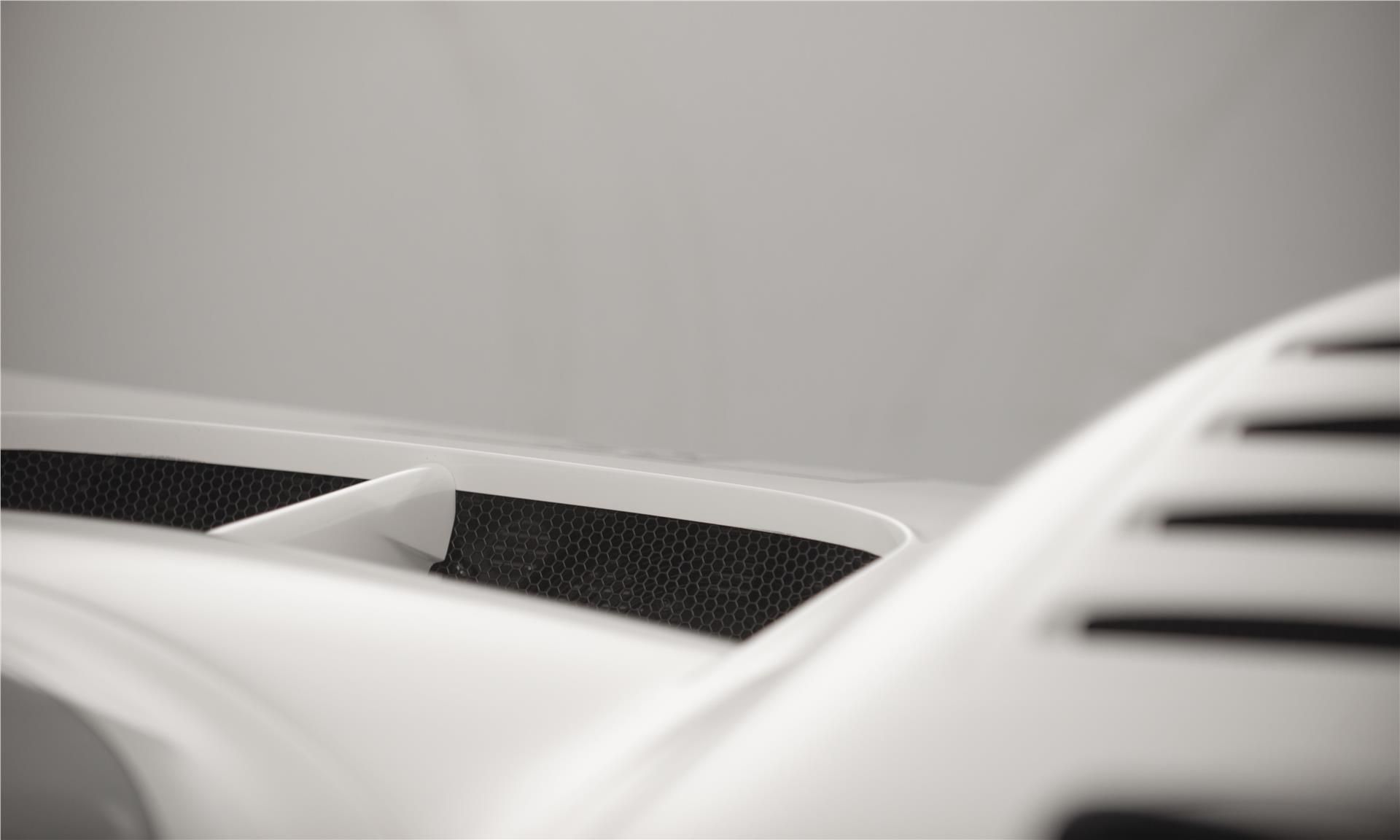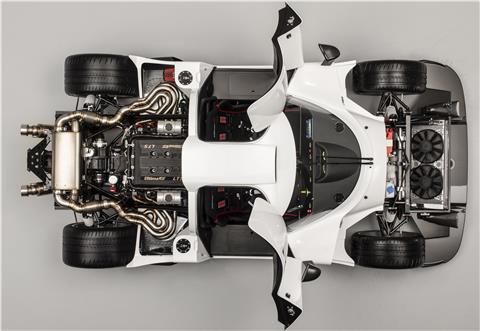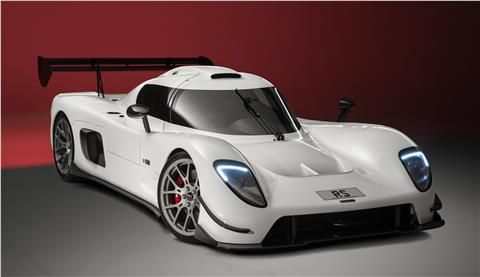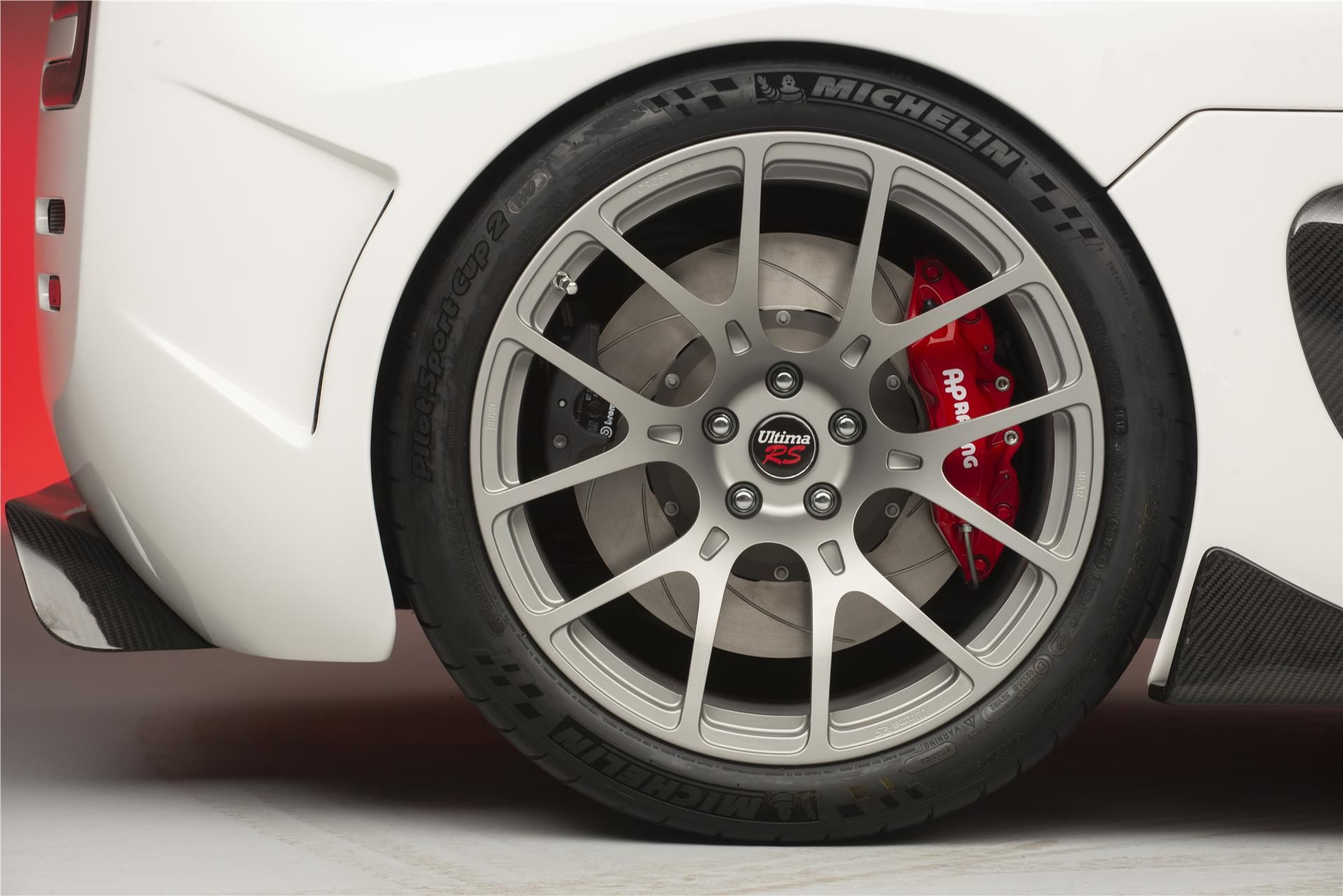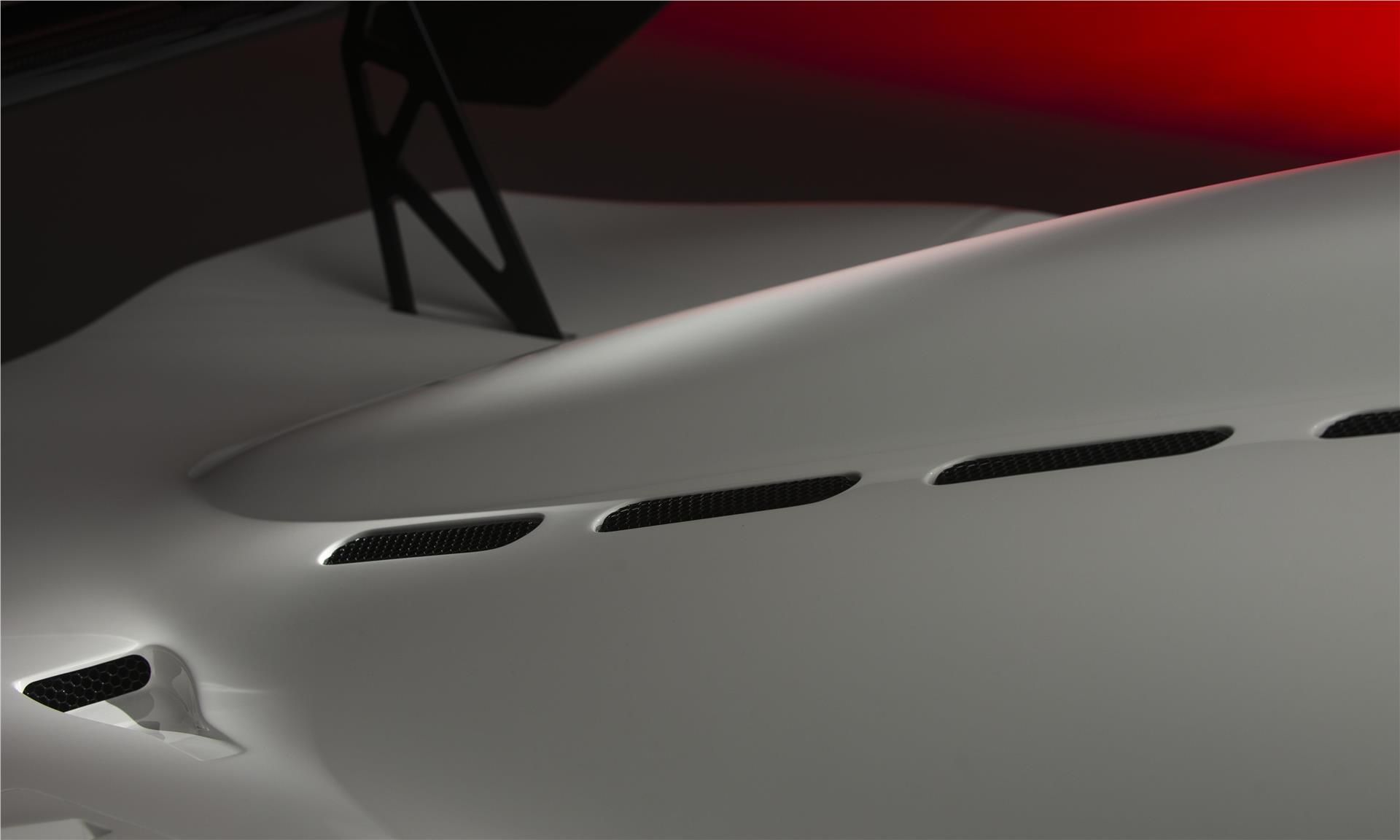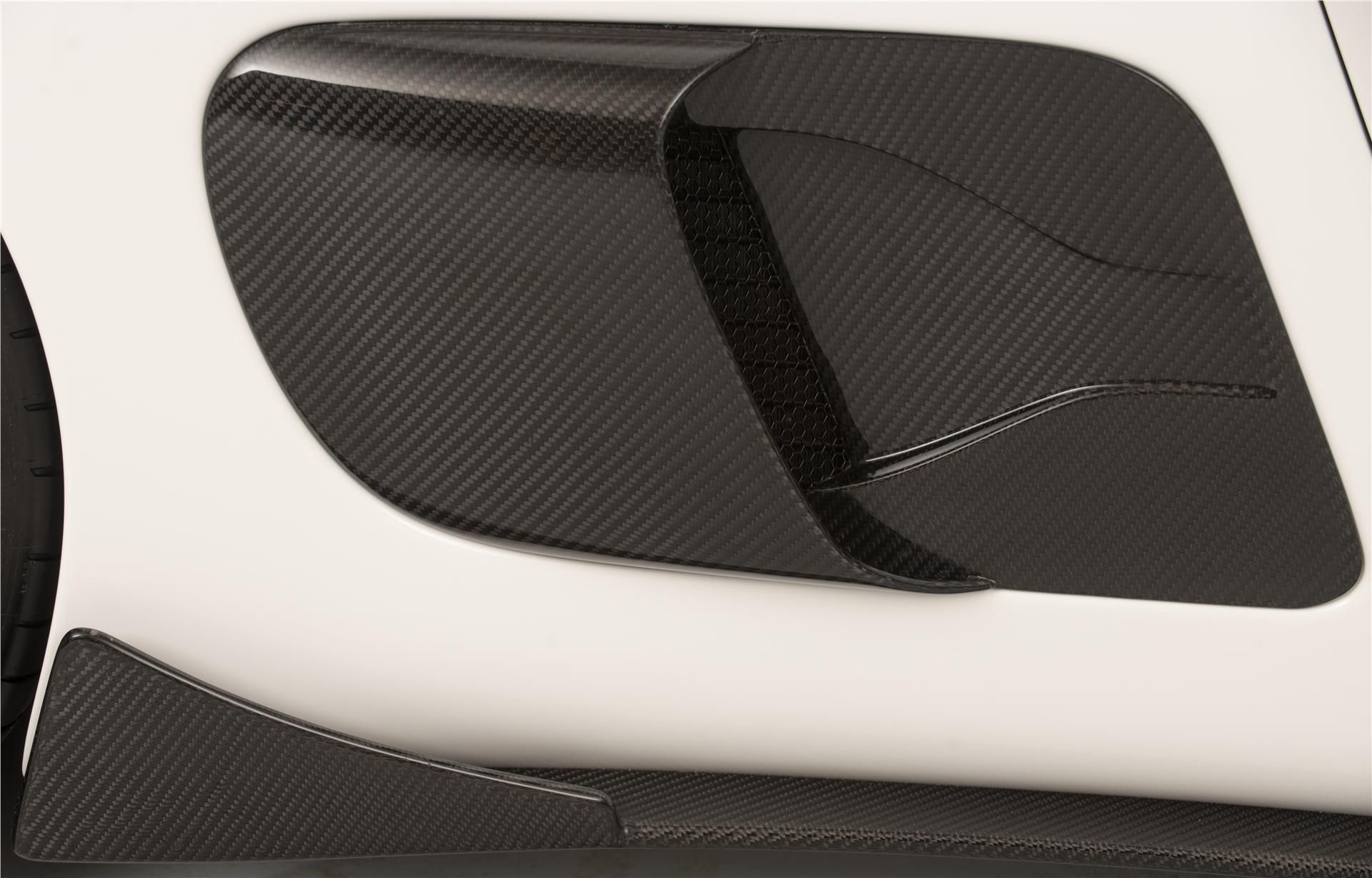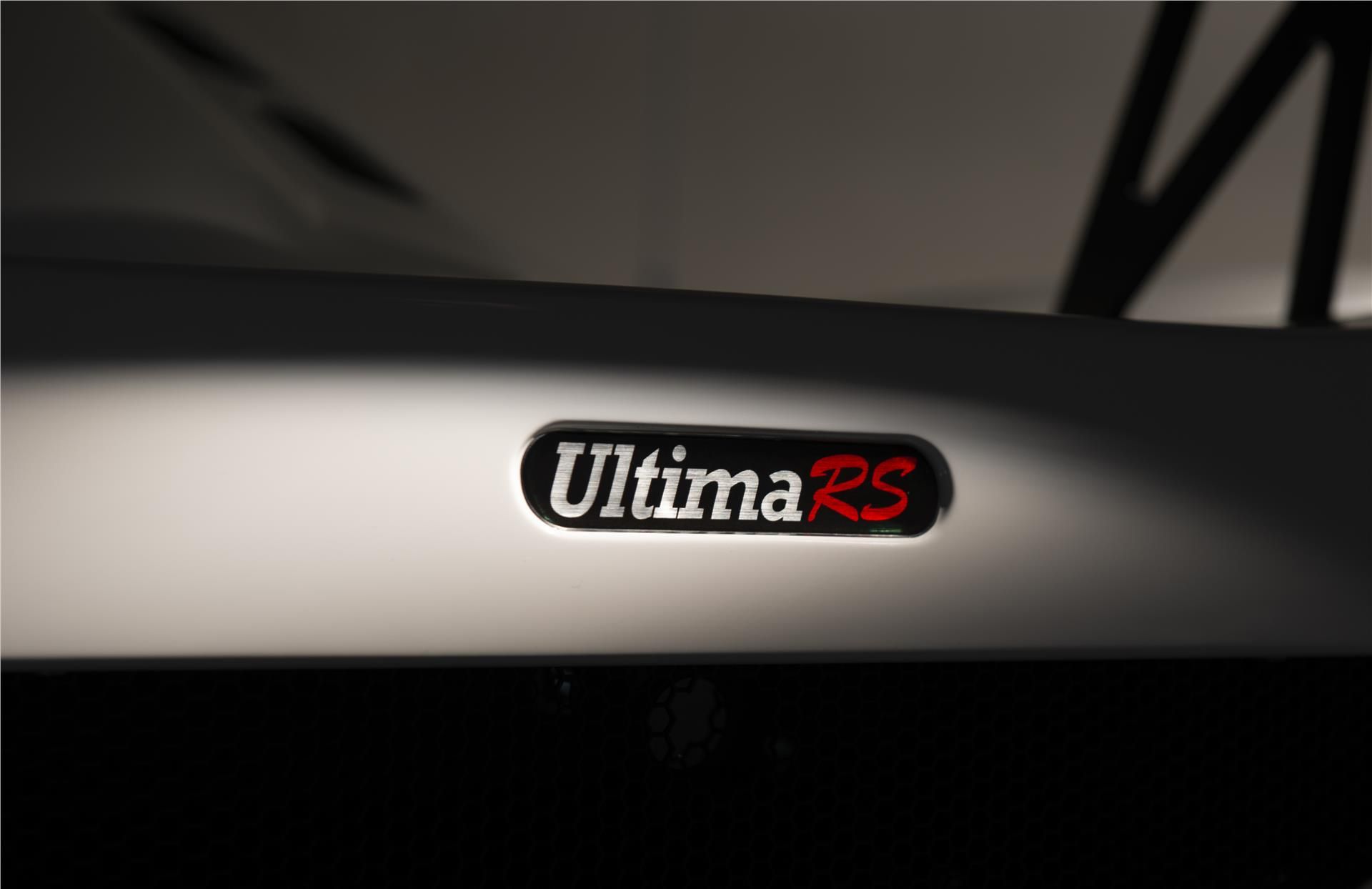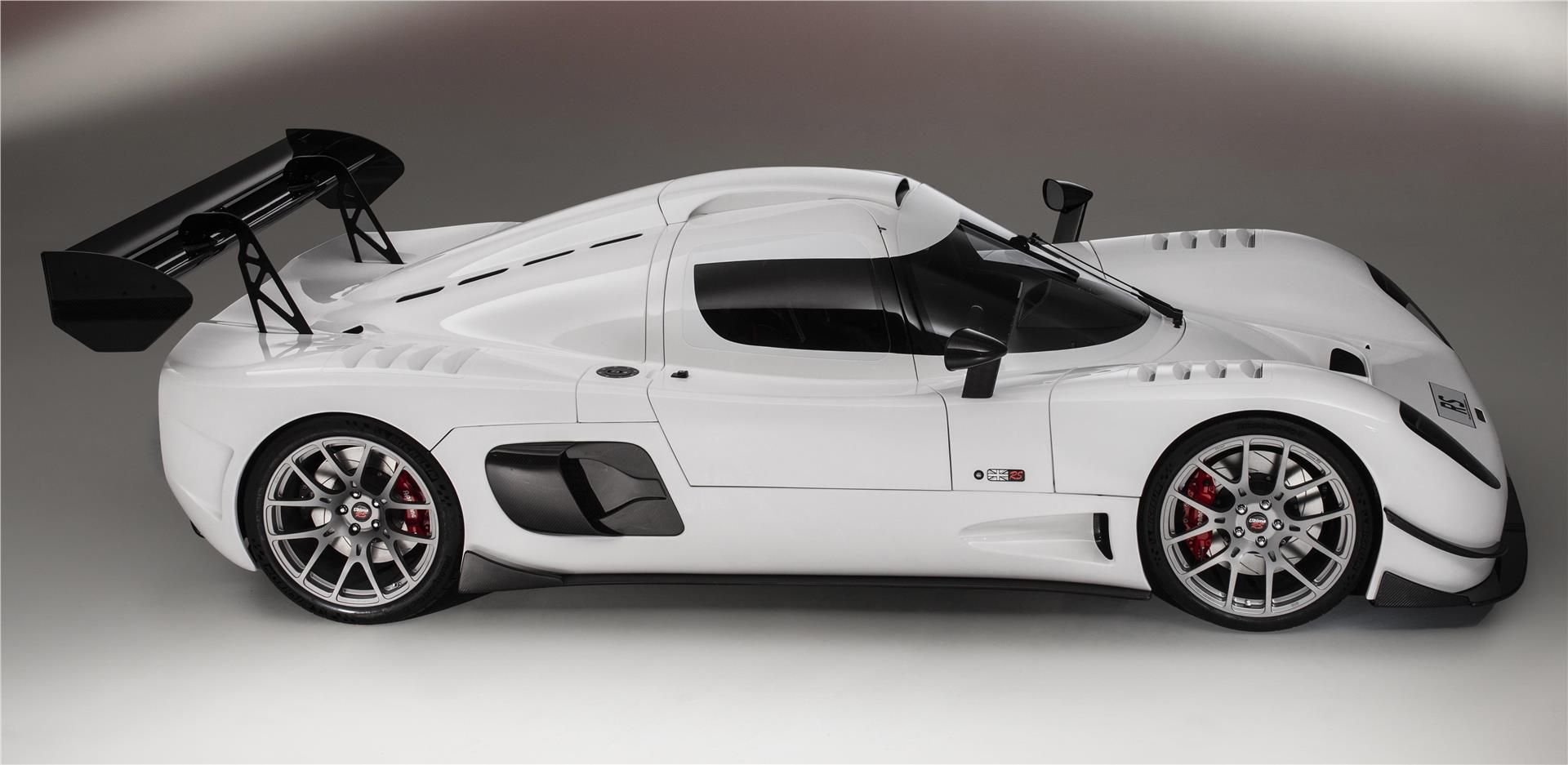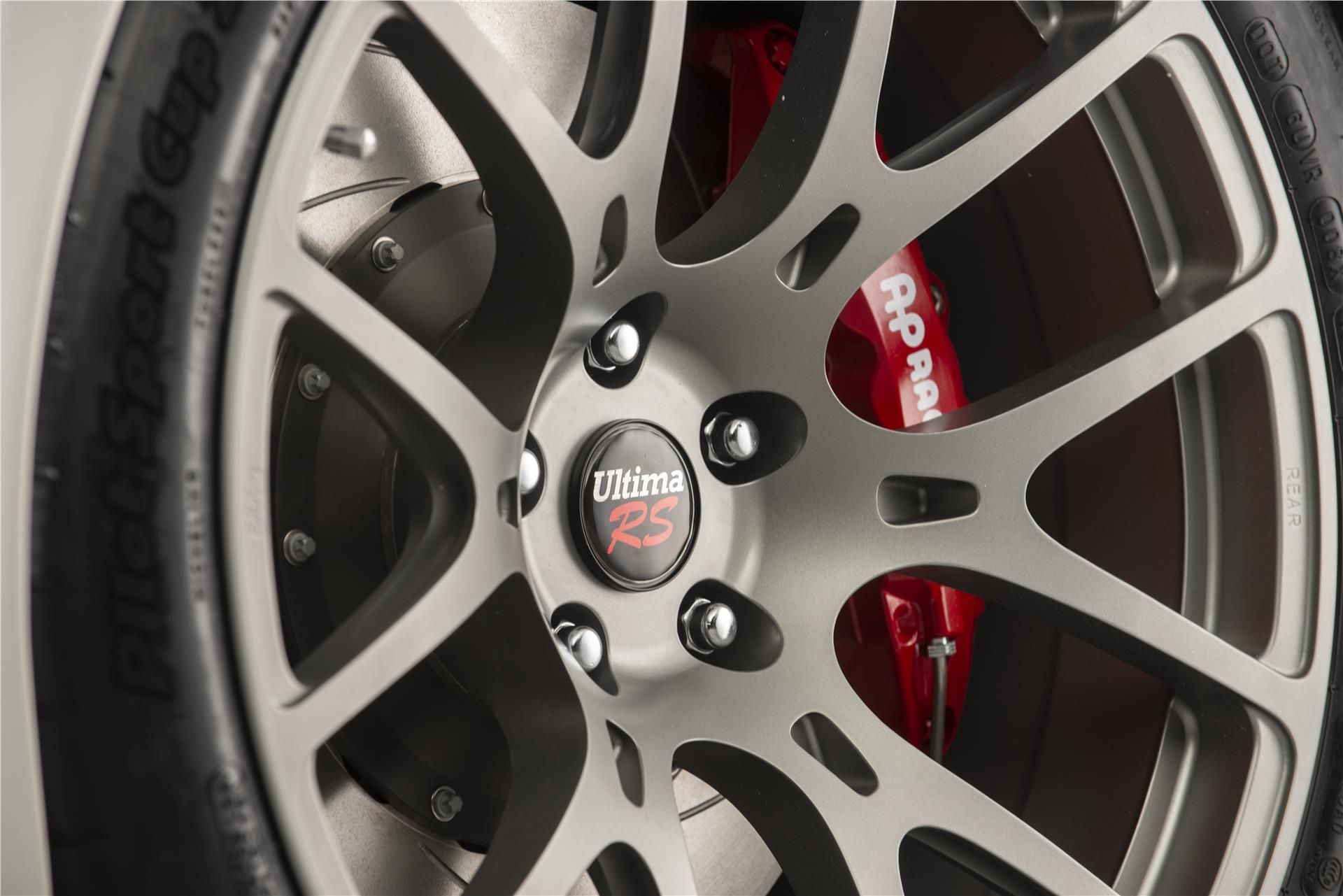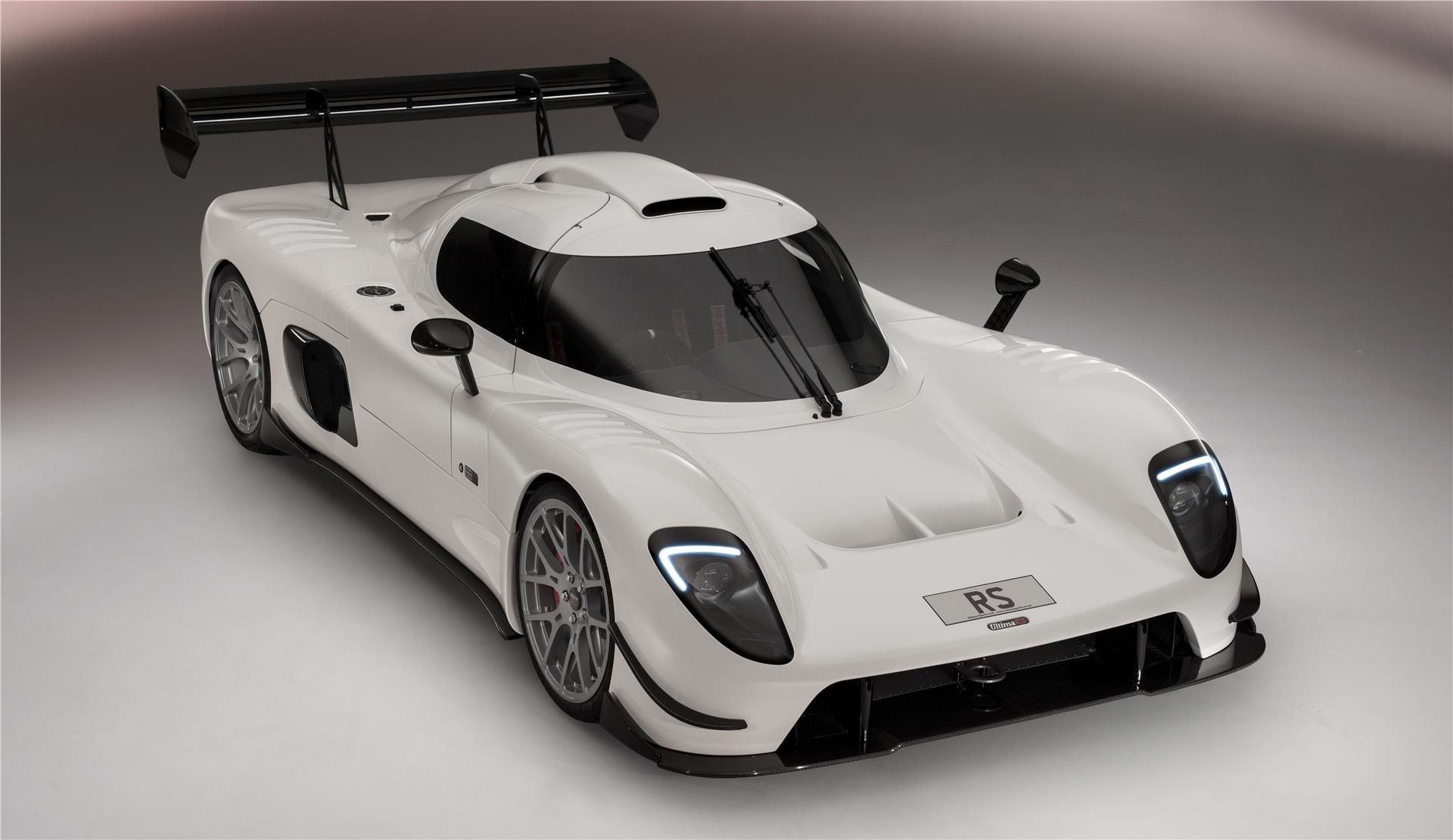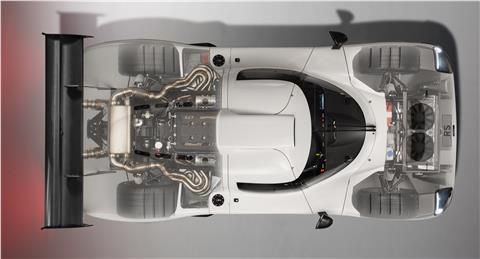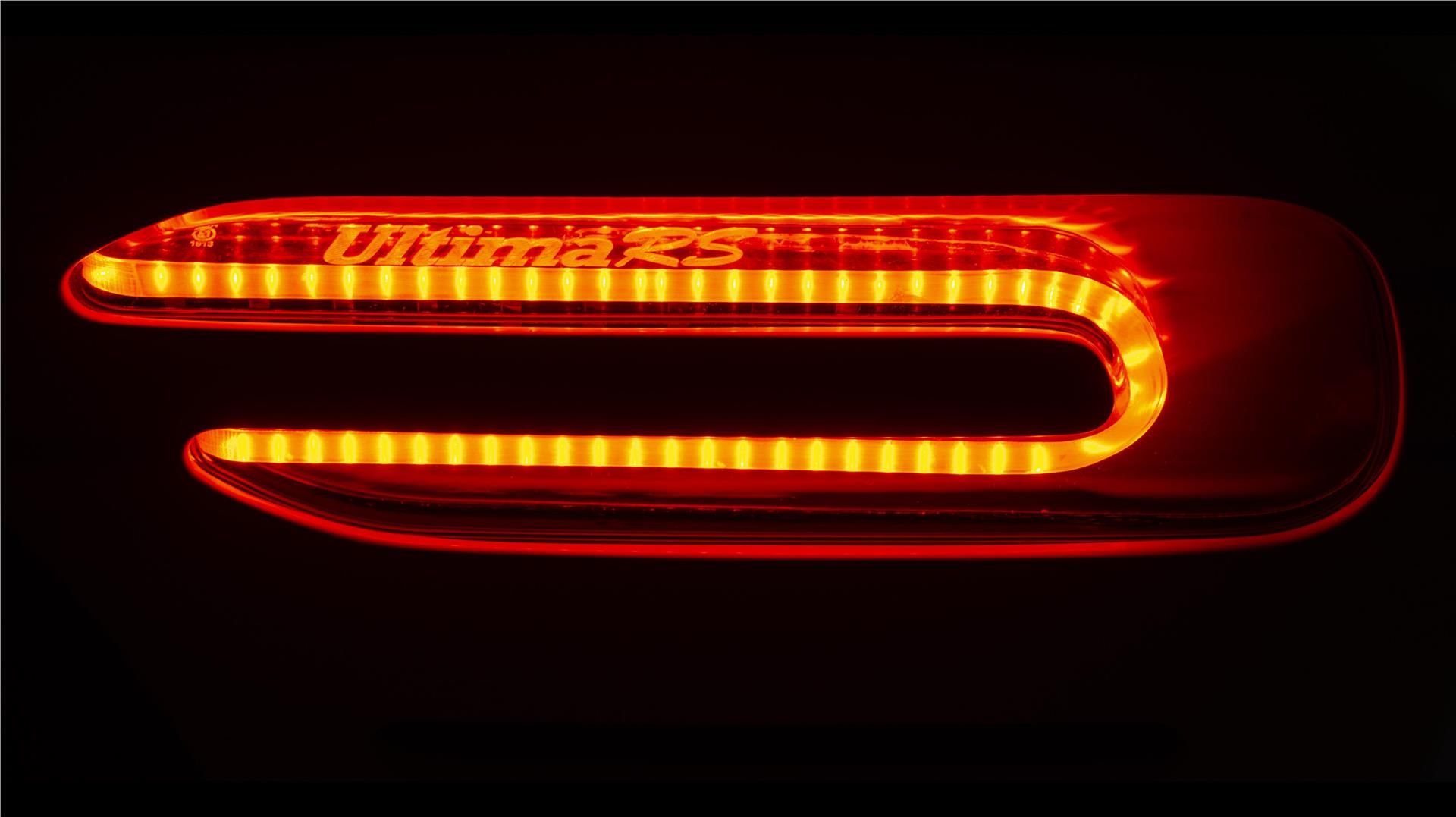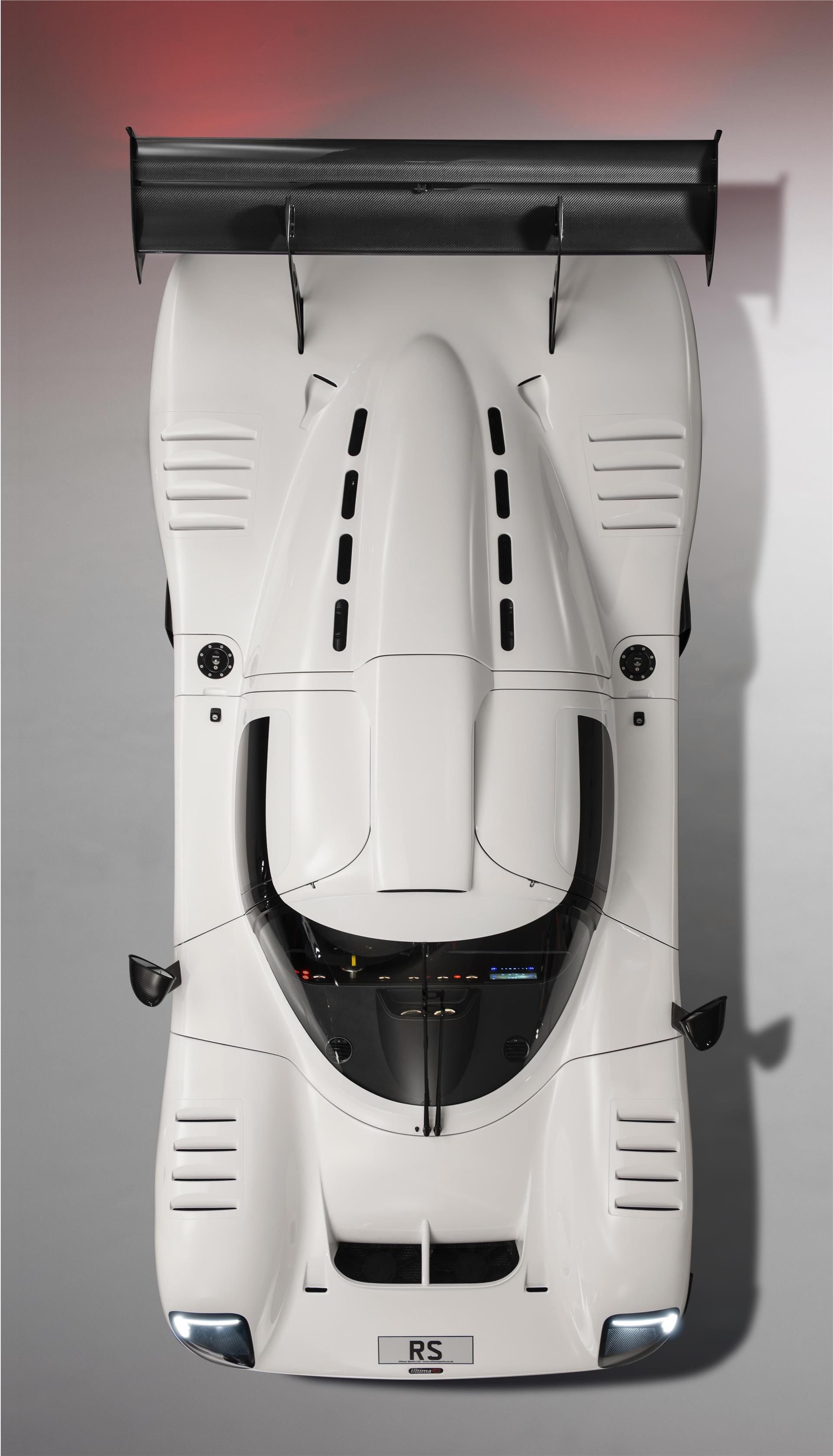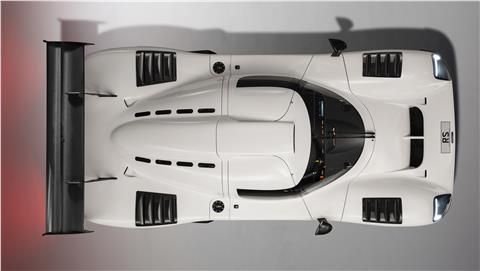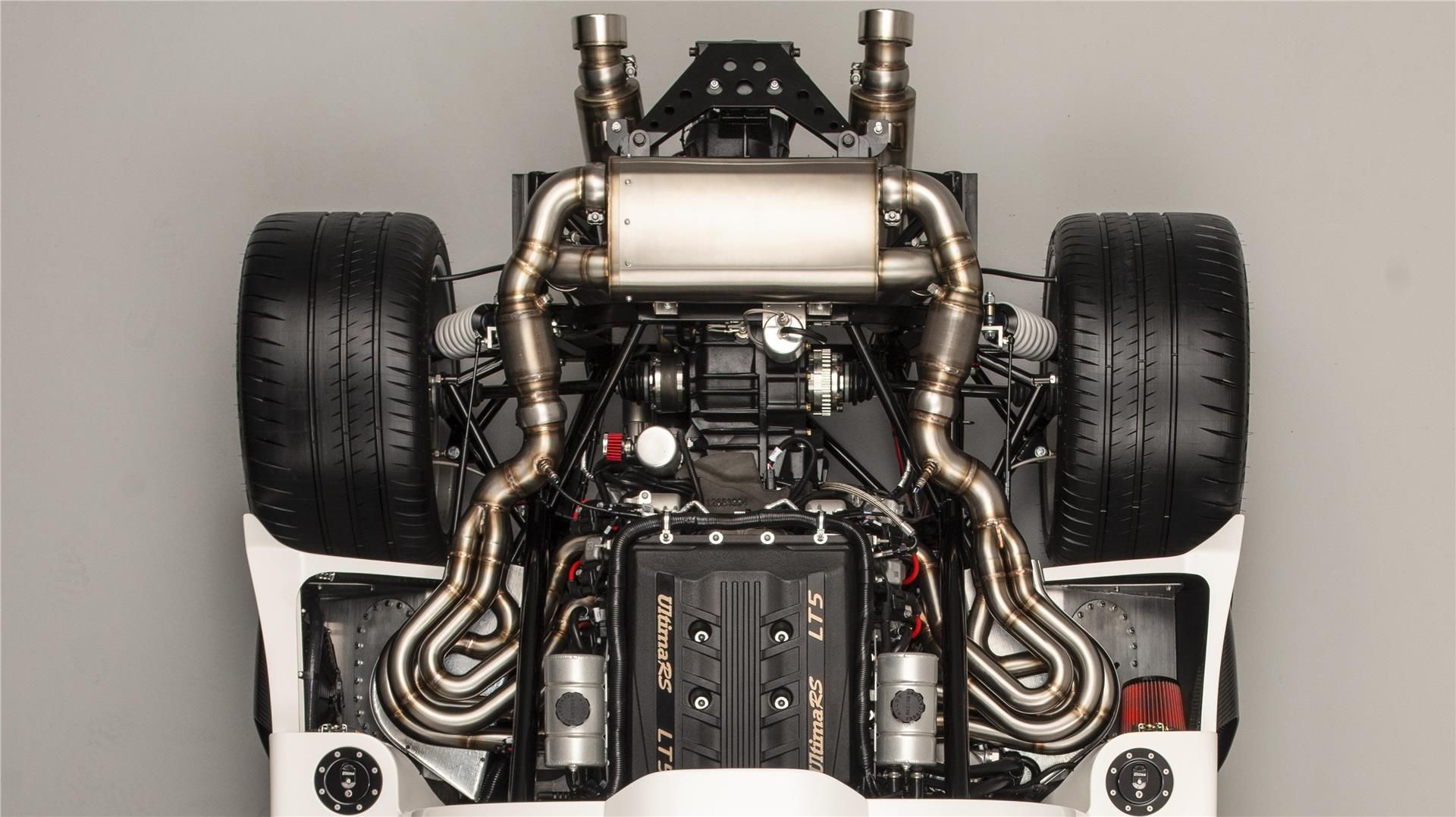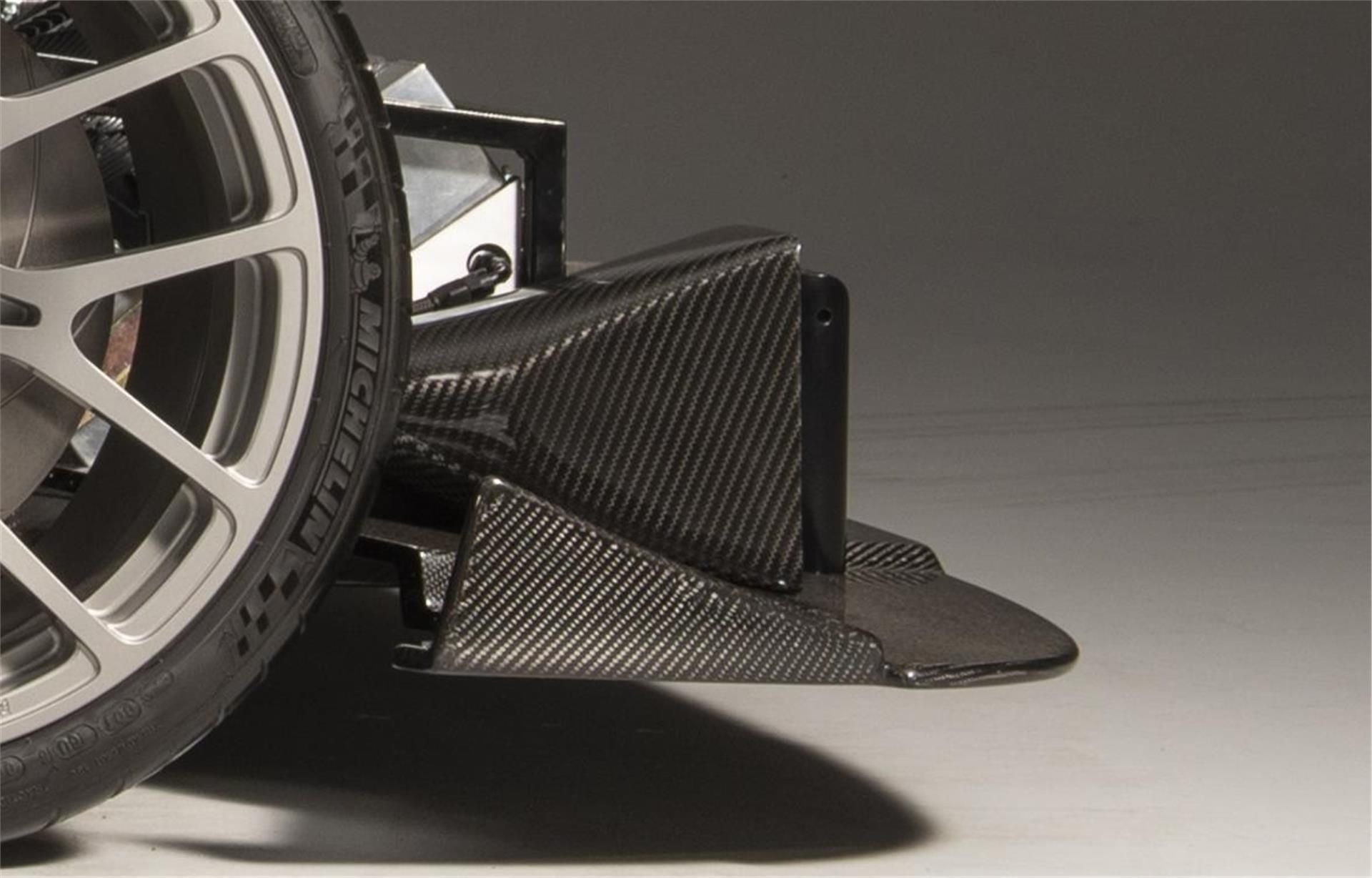Ultima has been making ludicrously fast track-focused supercars for over two decades but this latest one called the RS is the one for the ages. With as much as 1,200 horsepower from a supercharged Chevy-sourced LT5 V-8 and a dry weight of little over 2,000 pounds, the Ultima RS channels everything that was great about Group C prototypes in a package that you can take down to the shops.
The British are famous for building some of their best cars in sheds. Take Morgan, for instance. Or the Lotus 7-inspired Caterham. Ultima is yet another worthy example and, just like Caterham, you can assemble your Ultima in your very own garage if you so desire, all for the price of a "mundane BMW M3," according to the company. Not bad for something that would thrash just about anything at your local track day, right?
2020 Ultima RS
- Make: Array
- Model: 2020 Ultima RS
- Engine/Motor: V8
- [do not use] Vehicle Model: Array
Exterior
You may think we're merely listing the elements that make up last year's Le Mans winner but, in fact, the Ultima RS, a British pocket-sized supercar shares all those features with Toyota's prodigious TS050 prototype and, unlike the Toyota, the Ultima can be driven on the road - including Stateside!
With revised aerodynamics, huge wheels, and LED light clusters at both ends, the Ultima RS looks modern but the shape is recognizable to anyone that has seen an Ultima before as the general shape hasn't changed much since the '90s when Ultima was building the GTR. We'll delve deeper into Ultima's history below but what you must remember right now is that this isn't just another brittle British sports car that comes out of a shed boasting with some ridiculous numbers only to break down before you ever get to test its might. With the wealth of experience that Ultima Sports has acquired, on and off the track, it knows how to build the ultimate race car for the road at this price point.
Starting in the front, you'll notice that the Ultima RS features something most other cars you'll encounter on the road do not: a tow loop. It's there for when you get stuck at the side of a track and need to be towed out of harm's way. The loops come straight out from the gaping mouth of the front inlet that conceals venturi generators within the tunnels on either side of the monocoque. The extending lip of the splitter, that sports a taller central step before going down as it wraps around the nose of the car, helps direct air through the inlet and around the corners of the nosecone.
The edges of the lip, just before the front wheel arches, go up to form some vertical winglets that work in conjunction with the curved dive planes up above. These aerodynamic devices help generate downforce although it's the underbody downforce that's most notable.
Headlights are placed on the edge of the fenders and, unlike older Ultimas, they look a lot more modern both due to the redesigned shape and the presence of LED running lights. The nose of the car is flat, plunging down between the tall fenders that have been redesigned to clear the 19-inch rims. An ample, rear-facing air vent helps air circulation through the front-mounted radiators. There are also two more inlets on either side. There are also slats atop both the front and the rear fenders and hot air from the brakes get out via ducts that exit aft of the wheels (in the front).
While both the engine cover and the front deck are held in place by hinges, they can be unlatched for complete, unbridled access to the car's internals. With the front deck off, the front bulkhead and the wheels are both exposed. The front deck opens just like an E-Type's hood does while the rear deck is hinged at the back.
The side skirts, just like the lip of the splitter, extend beyond the edges of the bodywork and feature, just before the rear wheel wells, a vertical winglet. Directly above the carefully sculpted skirts, you'll find the side-mounted splitters with a caved-in entrance for improved air management. All of these aero elements are new to the RS and have been tested during wind tunnel sessions at the HORIBA MIRA (Motor Industry Research Association) proving grounds.
No other supercar in the world rides on the forged alloy, one-piece 19-inch rims that are available for the Ultima RS. Designed solely for this car, they are wrapped by Michelin Pilot Sport 4S tires although you have the option of going for the more track-oriented Michelin Pilot Cup 2 tires. The six dual-spoke design fails to conceal the massive AP Racing rotors behind them.
The exterior rearview mirrors are placed on the small strip of bodywork that remains in place when you open both the dihedral doors and the front deck. The narrow side windows continue the shape of the curved windshield giving the outside appearance of a one-piece wraparound window akin to a racing car. In fact, the Ultima RS' design was inspired by the legendary cues of the ultra-powerful Group C prototypes that ruled the world throughout the '80s.
What goes hand-in-hand with the racing car aesthetics is the roof scoop that's an optional extra which continues the line of the engine lid's hump. The scoop is chiseled to clear the doors that take a piece of the roof with them when they open up in pure Ford GT40 fashion.
Although, having said that, the rear deck does feature four vents on either side of the hump down the middle for cooling purposes. You can't really peek through them to see the engine but you can see a bit of what goes on under the skin through the mesh grille in the middle of the rear fascia.
The grille is perforated to make way for the stainless steel exhaust system with polished tips. The C-shaped taillights are new and, just like the headlights, feature LED technology with their very own start-up and shut down sequences for an added touch of modernity. It's one of the very few, however, as the Ultima RS is very much a throwback ride down to the fixed, swan-neck rear wing made out of carbon fiber. There are none of those clever active wings here. The wing is adjustable with nine different angles of attack starting from -2 degrees for minimum drag and going all the way up to a maximum angle of +14 degrees.
To maximize downforce, however, the RS is almost two meters wide or 74.8 inches to be precise (an F1 car is 78.7 inches wide). The RS is also barely four inches taller than the original GT40 from the '60s and let's not forget the GT40 lacked that huge rear wing out back. At 44.3 inches tall, Ultima's latest creation is lower than an Aventador S or Ferrari's SF90 Stradale. It's also 4.2 inches lower than the Mazda Miata, a car that's shorter than the Ultima RS and also 6.5 inches narrower.
Ultima RS exterior dimensions
|
Length: |
164.2 inches (4,170mm) |
|---|---|
|
Width: |
74.8 inches (1,900mm) |
|
Height: |
44.3 inches (1,125mm) |
|
Wheelbase: |
100.86 inches (2,562mm) |
Interior
It may sound laughable by today's standards but, while a well-appointed modern grand tourer such as the Porsche 911 weighs in excess of 3,320 pounds, the Ultima RS tips the scales at just about 2,050 depending on the optional extras you pick.
So, how austere is a 2020 car that weighs just slightly more than a Mitsubishi Mirage? Well, if you tick just about any option Ultima Sports is willing to bolt to an RS, then you've probably got as many amenities as you would inside the $15,000 Mirage...
But this shouldn't be an issue when you consider the Ultima's purpose: to be spine-bendingly fast and deliver the emotion of speed in the most unadulterated way possible in the modern era. The guys who've created it reckon that "most manufacturers seem intent on installing as many new technological driving aids into their cars as they can, steadily numbing the very feel that a sports car driver craves."
They think that this is "almost sacrilege because the less input the driver has, the less they can enjoy the pure thrill of driving." You'll notice there's nothing between you and "the pure thrill of driving" from the moment you jump over the high sills and get in the tight bucket seat that faces the wheel. Why? Because that wheel is not dissimilar to what you may have at home on your gaming rig.
You've got a button each for the blinkers, the wiper (there's only one in the middle of the windshield), the hazard lights, the ventilation system, and, finally, the lights. The rim of this small, yet 100% round, OMP wheel is wrapped in Alcantara leather and you've got your 12 o'clock marker in yellow. The rounded dash is wrapped in leather too but we reckon the quality of the white stitching leaves something to be desired, especially around the area of the main gauge cluster propped on top of the dash.
It's there that you'll find your odometer and your tachometer, the latter going all the way to 8,000 rpm while the speedo stops at 250 mph. Both of these big dials are analog as are all the other gauges on the dash: one for the battery, one for water temperature, another for oil pressure, and also a gauge for oil pressure and one for fuel. A pair of idiot lights are placed above the start/stop button which, in turn, is to the left of the fan button. The whole arrangement looks crude with the buttons themselves seemingly coming out of Proton's parts bin from the '90s.
With no place for a screen within that main gauge cluster positioned in the middle, the warning lights are located on the right-hand side in the RHD prototype shown to the public by Ultima. The layout would be reversed if you wanted your RS in LHD. The much-lamented infotainment system should be operated by the passenger given the screen's location and that is probably a good idea because you can't afford to lose your focus when behind the wheel of a car such as this one.
The screen itself with its line of buttons down below looks like something you'd see coming down from the roof lining of a modified '03 Navigator and this is yet another hint at the car's purpose which is not to keep you entertained via its infotainment system. You've got three pedals, an unassisted wheel, and the tall lever of a manual transmission that takes care of the entertainment. A notable option is the AIM MXS data logging system that would come in handy on track days.
As the sides of the footwell (lined with bolted-down aluminum plates) limit legroom towards the front of the chassis, you'll begin to realize you should choose your passengers based on height if you plan to share the Ultima RS experience with someone. A drilled plate is located on the passenger's side of the footwell. The roll-bar hangs from above but, surprisingly, Ultima has bothered to wrap the metal bars in leather. Forward visibility is quite good owing to the shape of the windscreen and you get a really good look of those rather tall front fenders making it easy to place the car while cornering.
Even a Caterham is more practical a car and that says a lot about the RS. Probably the only practical thing you can get for your Ultima is the optional rear-view camera and parking sensors because, well, there's no back window. The other practical thing is the system that increases front ground clearance so that the car can go over speed bumps - another optional extra.
Drivetrain
As is the case with most low-volume supercars, the first Ultimas featured brittle fiberglass bodies and that's still the case today with the RS sporting a GRP body to which all of those carbon fiber elements (the splitter, the wing, the diffuser, the side splitters, and the side skirts) are bolted to. The chassis itself is a steel spaceframe boasting with "market-leading torsional rigidity".
Suspension is by double unequal length wishbones with extended length wishbones in the front and alloy uprights all around. The damper over coil spring suspension is fully adjustable for bump, rebound, and ride height.
There are no secrets when it comes to the steering, either: an unassisted quick ratio rack-and-pinion setup with 2.1 turns lock-to-lock. The AP Racing brakes are appropriately huge with 12.67-inch rotors with four-pot calipers all around. If you think that's not enough, Ultima offers 14.25-inch rotors with six-pot calipers at all four corners. The brake bias is, obviously, adjustable.
Just like a '60s sports car, the Ultima RS was designed to take in a variety of engines - but all of Chevrolet origin (Ultima won't sell you an RS if you intend to fit it with an engine from a different manufacturer as the car was fine-tuned to work with the LS and LT engines). You can choose an LS-series engine (such as the LS3, LS7 or LSA), or the LT range of direct fuel injection V-8 mills including the LT5.
Plug in the dry-sump, supercharged 6.2-liter LT5 V-8 and you'll see those numbers alter dramatically. Ultima quotes a 0-60 mph time of 2.3 seconds with the 800 horsepower LT5 with 0-100 mph done in 4.8 seconds and the 0-100-0 mph exercise completed in a staggering 8.7 seconds (remember that a Mustang Shelby GT50 does this in 10.6 seconds.) The standing quarter-mile takes just 9.2 seconds at 156 mph and, given enough room, an Ultima RS will exceed 250 mph.
And that's not all! Ultima, who've taken over the "ongoing production/sales rights for the Ultima LT engine package installation system, consisting of a new in-tank fuel system, cooling system, air induction system, stainless steel exhaust system, and engine wiring system," from Autobionics, can also tune the LT engines. The company says it can extract as much as 1,200 horsepower from the LT5 unit although no performance figures have been released for this insane combo. Remember, all that oomph would still reach the back wheels through a Porsche-sourced six-speed all-synchromesh manual - no automatic available.
After reading that, you may be wondering how can somebody manually shift fast enough to match that official 0-60 mph time of 2.3 seconds with the 800 horsepower LT5 in place.
Granted, the Tesla does it in a serene fashion while being a 4,960-pound sedan but hey, bragging rights tend to not bow down to such insignificant details, at least at the bar!
What's certain is that just about any ICE-powered supercar on the planet will have a hard time keeping up with an Ultima GTR. After all, even the Chiron Super Sport 300+ is slower to 60 mph (by just 0.1 seconds, officially). An M3, the car Ultima refers to when talking about the price of an RS (in kit form, no less) goes from 0 to 60 mph in 3.9 seconds, a whopping 1.6 seconds slower than the 800 horsepower Ultima and still some 0.6 seconds slower than the same car powered by the 430 horsepower LS3.
But all this shouldn't surprise anyone. Ultima's previous models, the GTR and the Evolution, have been racking up acceleration and lap time records from the moment they were released onto the market. An Evolution paired with the Ultima-tuned 6.8-liter supercharged V-8 that cranks out 1,020 horsepower, needs 2.3 seconds to go from naught to 60 mph and 4.9 seconds to go from naught to 100 mph. These times were the fastest of any car when the Evolution was unveiled in 2015 and, to put it into perspective, the RS matches the 0-60 mph while improving on the 0-100 mph time by 0.1 seconds, all with less power. The RS is also the lightest Ultima, shedding some 100 pounds in comparison to a GTR from the year 2000.
Ultima RS specifications
|
Engine |
Chevrolet-sourced LS-series V-8 or LT-series V-8, top option is the 6.2-liter OHV, aluminum block, 16-valve supercharged LT5 |
|---|---|
|
Bore x stroke |
4.06 x 3.62 inches |
|
Output |
800 horsepower at 6,300 rpm |
|
Torque |
>715 pound-feet of torque at 4,400 rpm |
|
0-60 mph |
2.3 seconds |
|
0-100 mph |
4.8 seconds |
|
1/4 mile |
9.2 seconds at 156 mph |
|
Top speed |
+250 mph (limited by gearing) |
|
Transmission |
Porsche six-speed manual transaxle |
|
Brakes |
AP Racing 12.67-inch curved-vane discs with four-pot calipers all around (standard); AP Racing 15.25 curved-vane discs with six-pot calipers all around (optional) |
|
Suspension |
Unequal length double wishbones all around with adjustable coil over dampers |
|
Steering |
Short-ratio, unassisted rack-and-pinion |
|
Weight |
2,050 pounds (depending on options) |
Pricing
You spec it the way you want it and then Ultima delivers you a bunch of crates full of your unassembled track beast. You buy everything straight from Ultima, including the engine, and then you get cracking. We guess Ultima could sell you a turn-key car built to your specification for what may be a hefty premium but what's clear is that an Ultima with the base LS3 V-8 in the middle will relieve you of at least $92,000 if you choose to build it yourself (shipping to your location not included). If you want the supercharged LT5 and you also want some of the gizmos (we think the rearview cameras, the nose lift system, and the sensors are very much a must), the price will easily exceed $120,000 (only the LT5 comes with an MSRP of $18,811).
That may seem like a lot when you consider how rough and ready the cabin is and how you may as well add the fact that it's a coupe to the list of practical stuff because it means you'll probably not get wet if it rains but a Caterham Seven 620S is in the same ballpark and it only sports a 2.0-liter, 317 horsepower engine good for a 0-60 mph time of 3.7 seconds and a top speed of 145 mph. And if you move away from low-volume, British sports cars and want a supercar from an established manufacturer, say, Lamborghini, you'll have to fork out as much as $275,000 for a Huracan Performante. An Aventador SVJ is priced at well over half a million and it's slower any day of the week, be it on a track or on a drag strip...
Competition
2016 Radical RXC Turbo
Trying to find something that can match an Ultima RS in all areas is nigh on impossible but we've managed to find a couple of cars that, at least, share the same ethos while not boasting with the same performance figures. The Radical RXC is Radical's most practical car yet as it's the first to have a roof.
All of the other Radicals - something you may tell from the company's name - are all-out track cars that are meant to be enjoyed at the track and lack a roof. The RXC, however, encloses its passengers with a wacky-looking canopy that makes it more practical than walking in the rain, or something.
The base RXC - that can be registered in some U.S. states since 2014 - is powered by a 3.7-liter Ford V-6 rated at 380 horsepower and 320 pound-feet of torque. It cost over $171,000 six years ago and, since then, Radical has developed some much more potent versions including the Turbo 500R that could match the Ultima RS.
After its most recent update, the Turbo 500R rockets down the road thanks to a 650 horsepower 3.5-liter, twin-turbocharged Ford EcoBoost V-6. The power is sent to the back wheels via a six-speed Hewland transaxle with flappy paddles that allows for a 0-60 mph time of just 2.7 seconds en route to a top speed of 180 mph. It weighs just 2,491 pounds and features a similar suspension setup (plus anti-roll bars) to the Ultima although the added weight would surely hamper it down in a one-on-one battle. It's also more expensive than even the +800 horsepower RS.
Read our full review on the 2016 Radical RXC Turbo
2015 Praga R1R
Czech automaker Praga came back from the dead in the most peculiar of ways: by unveiling a track-focused, prototype-esque race car in 2011. The company, that made a variety of cars and bikes prior to WW2, and then turned to buses and trucks after the War, followed it up with the introduction of the street-bound R1R in 2015.
The R1R arguably looks more insane than even the RXC and the Ultima RS with its single-seater-style nose and elaborate tunnels, dive planes, and turning vanes around the front end that direct air underneath the wings and through to the sidepods. It features pushrod Koni dampers and the engine is from a Renault Clio Sport 200.
We're talking about the F4R 832 2.0-liter four-pot that is fitted with a turbocharger by Praga to crank out 390 horsepower at 6,750rpm and 391 pound-feet of torque at 4,200 rpm. It's all directed to the wheels via a Hewland semi-automatic gearbox with a centrifugal clutch. With a dry weight of about 1,477 pounds due to the heavy use of carbon fiber (the monocoque is made out of carbon fiber as well as most of the body, with only the engine sub-frames being made of steel), the R1R reaches 60 mph from a standstill in under three seconds.
The car is smaller than the Ultima RS but can still produce its own weight in downforce when traveling at 124 mph. Inside, you'll find racing bucket seats with six-point harnesses, the driver's seat featuring a multi-functional steering wheel that's not dissimilar to what you'd find inside the track-only Praga R1. The only issue with the Praga R1 (beyond the obvious lack of practicality and rough ride that's common among all such cars)? It starts at $195,885.
Read our full review on the 2015 Praga R1R
Final Thoughts
The Ultima RS is not for those that are faint of heart. In its most insane trim, packing Chevy's latest dry-sumped and supercharged 6.2-liter V-8, it's about as fast as anything with a gas-powered engine. That's because the guys over at Ultima couldn't care less if you are actually comfortable inside their car and they also hate driving aids and automatic gearboxes. What that no-nonsense philosophy does is A) keep the weight down, and B) make the RS a truly exhilarating car to drive, which should be obvious by just looking at the thing.
Sure, you could be sensible and buy a well-equipped sports car from a volume manufacturer for the same amount of money you'd pay for an Ultima RS but we can guarantee that you'll never experience the sort of thrills you get when behind the wheel of this 2,050-pound four-wheeled rocket. Granted, you should head to a racing school of your choice if you really want to go hammer and tongs in the Ultima and not end up in a pile of bent GRP but we think it's worth it although everyone at the track will throw you envious looks in the paddock.
The history of Ultima
The first Ultima was built by Noble Motorsport Ltd, a company established by engineer and designer Lee Noble. Finished in 1983, the Mk. 1 was quickly superseded by the Mk. 2 Like its predecessor, the Mk. 2 was powered by a V-6 PRV engine from a Renault 30 and featured a square-tube spaceframe chassis and many Ford Cortina components. Soon enough, the Mk. 2 was made to work with Ford's range of V-6 mills and it was with a 3.1-liter Essex V-6 that the first 'customer' Ultima was fitted with. The happy camper who bought it was Ted Marlow who quickly began racing his example alongside Noble's own Mk. II in a small British championship.
Between the pair of them, Marlow and Noble dominate the series claiming multiple victories and lap records with the experience gained from all this on-track activity going into the development of the Mk. III that was introduced in 1989 complete with new bodywork. Marlow, displeased with the performance of the Renault engine, modifies his Ultima to accommodate a 6.2-liter Chevy V-8 with Kinsler injection.
Others soon follow in the footsteps of Marlow and Ultimas begin to sweep the floor in a number of low-level British series that lead to the cars being banned from competition for being too dominant. Faced with the prospect of not being able to race his Mk. III, Marlow modifies it and makes it roadworthy, swapping the 6.2-liter V-8 for a 5.7-liter unit with Motec fuel injection mated to a Porsche four-speed transaxle.
Soon after, Lee Noble sold the company to Ted and Richard Marlow who renamed it 'Ultima Sports'. The latter acts as the company's director to this day and, in 1999, when the Marlows unveiled the Ultima GTR, Lee Noble established a new automotive company, Noble Automotive that would go on to build some of the most outlandish British supercars including the unapologetically old-fashioned M600 that's still in production today.
Ultima, meanwhile, kept building cars around that same 1989 design for years although some racing versions featured a longer tail or a different, lower nose section. Ultimas have been racing competitively since the dawn of the new millennium in the Belgian Endurance Championship (Belcar), its British equivalent (Britcar), the British GT, and even took part in the Rolex 24 Hours of Daytona back in 2002. Another Ultima sports car was also campaigned around the turn of the century in the Canadian GT Championship.

